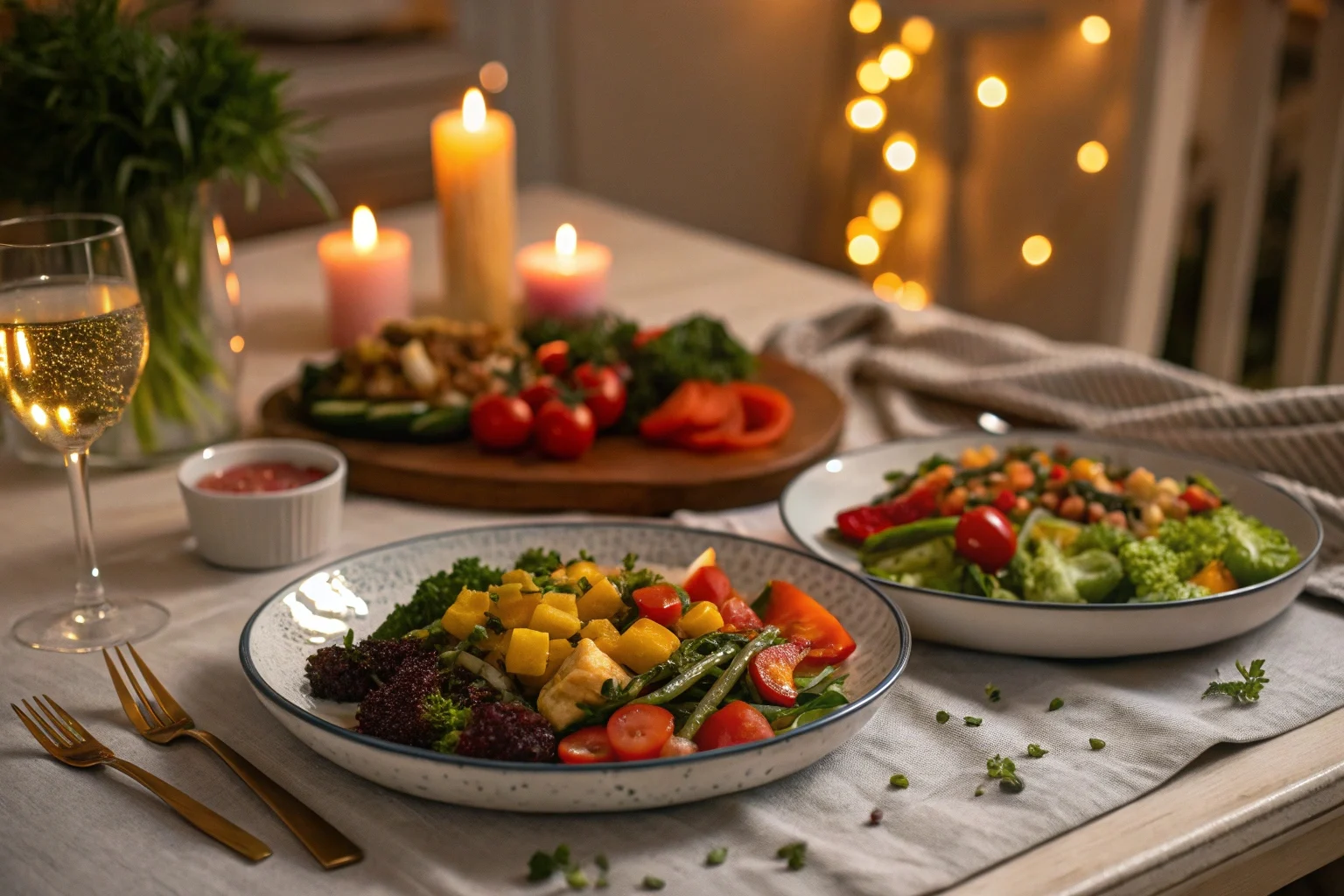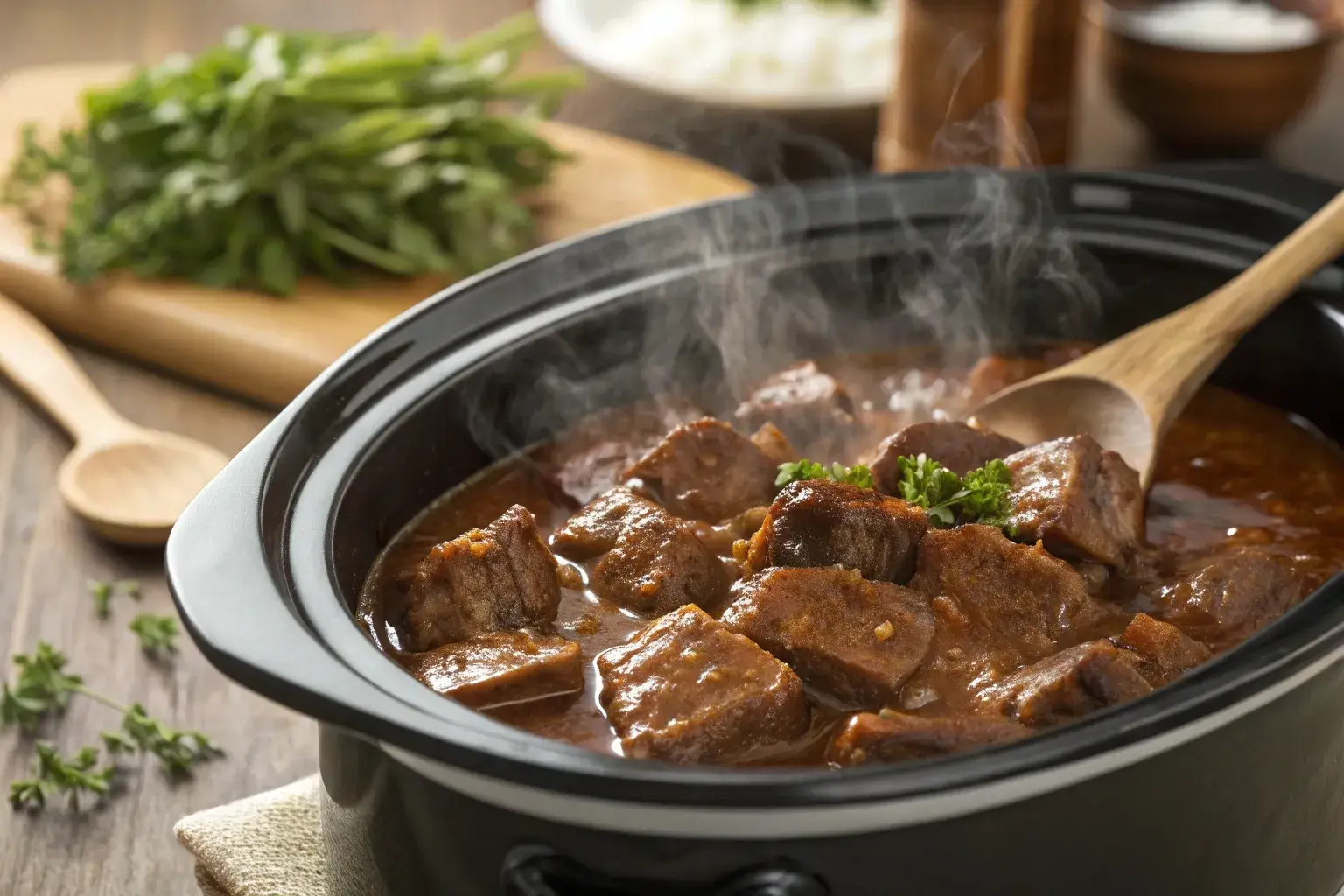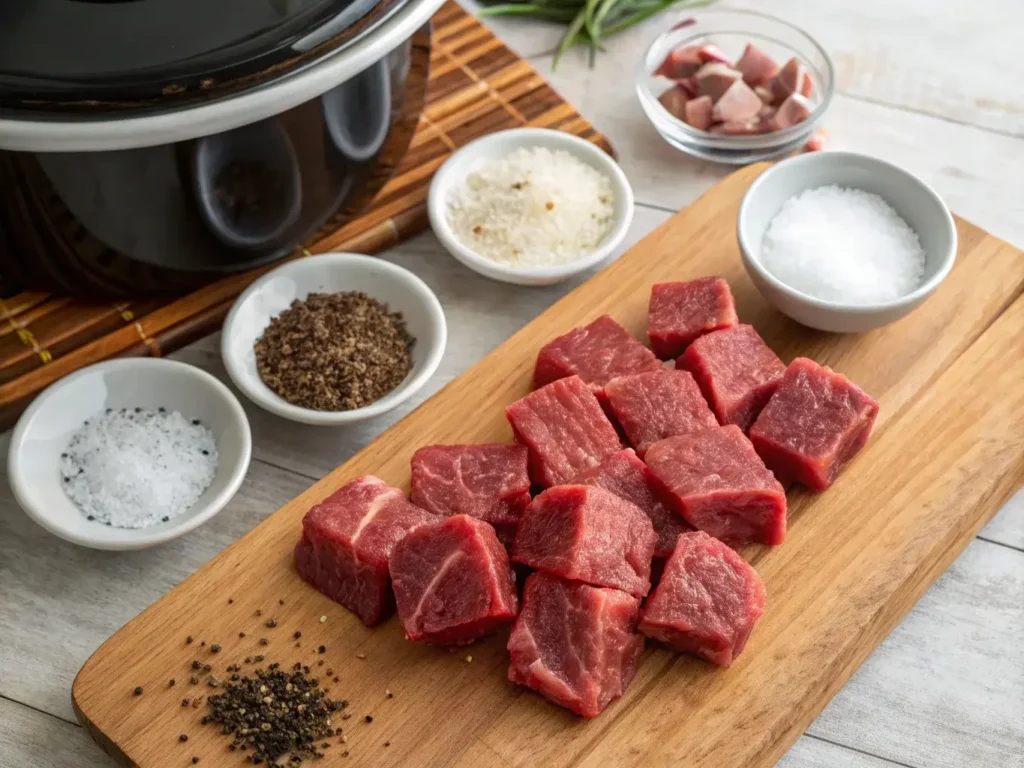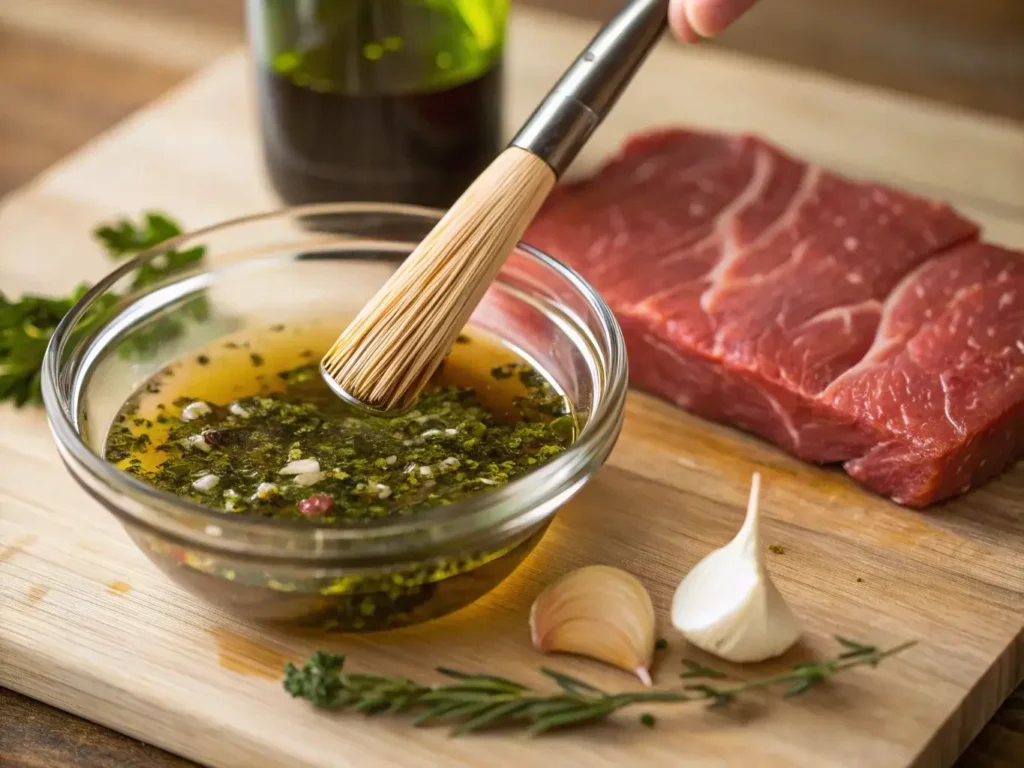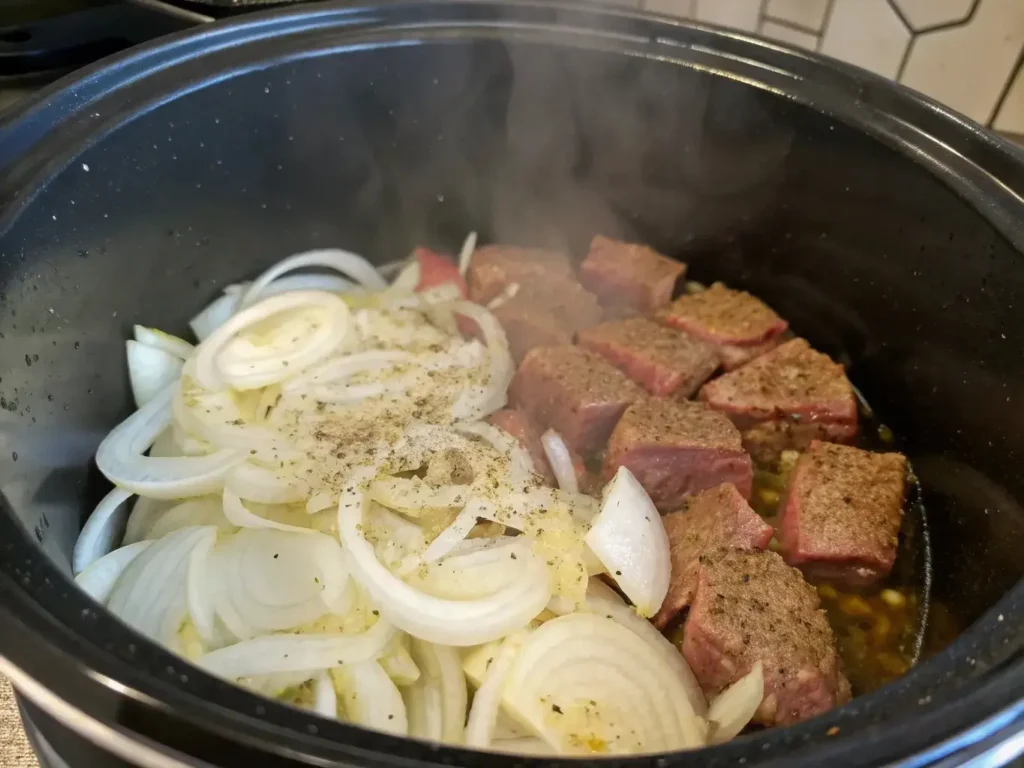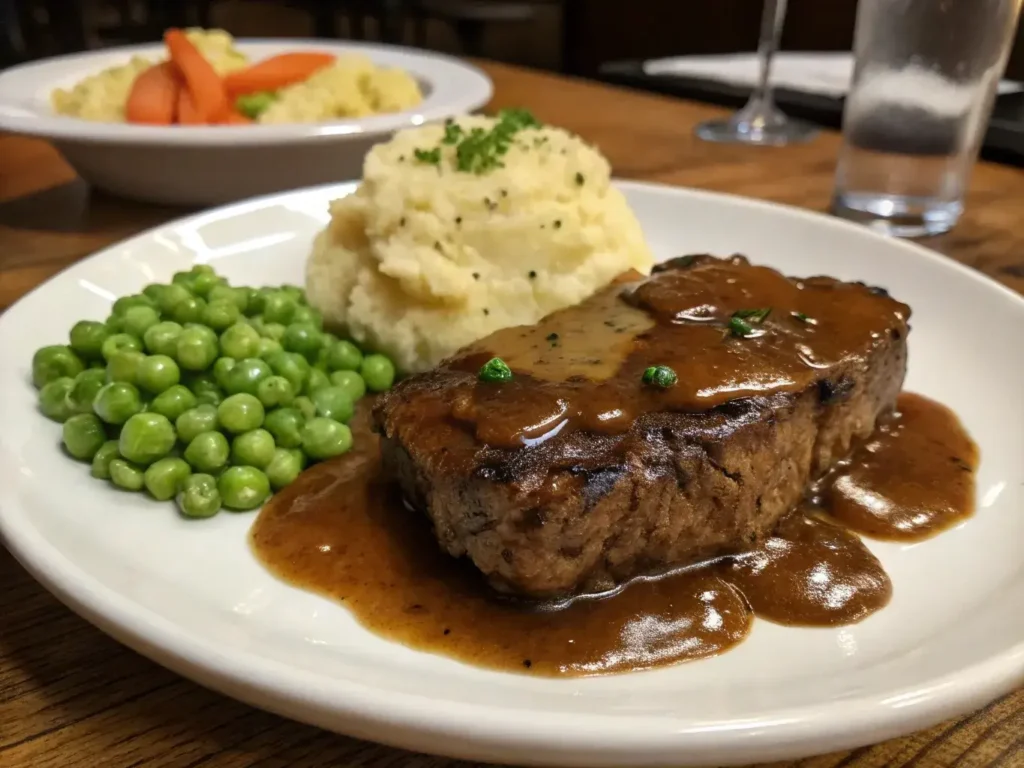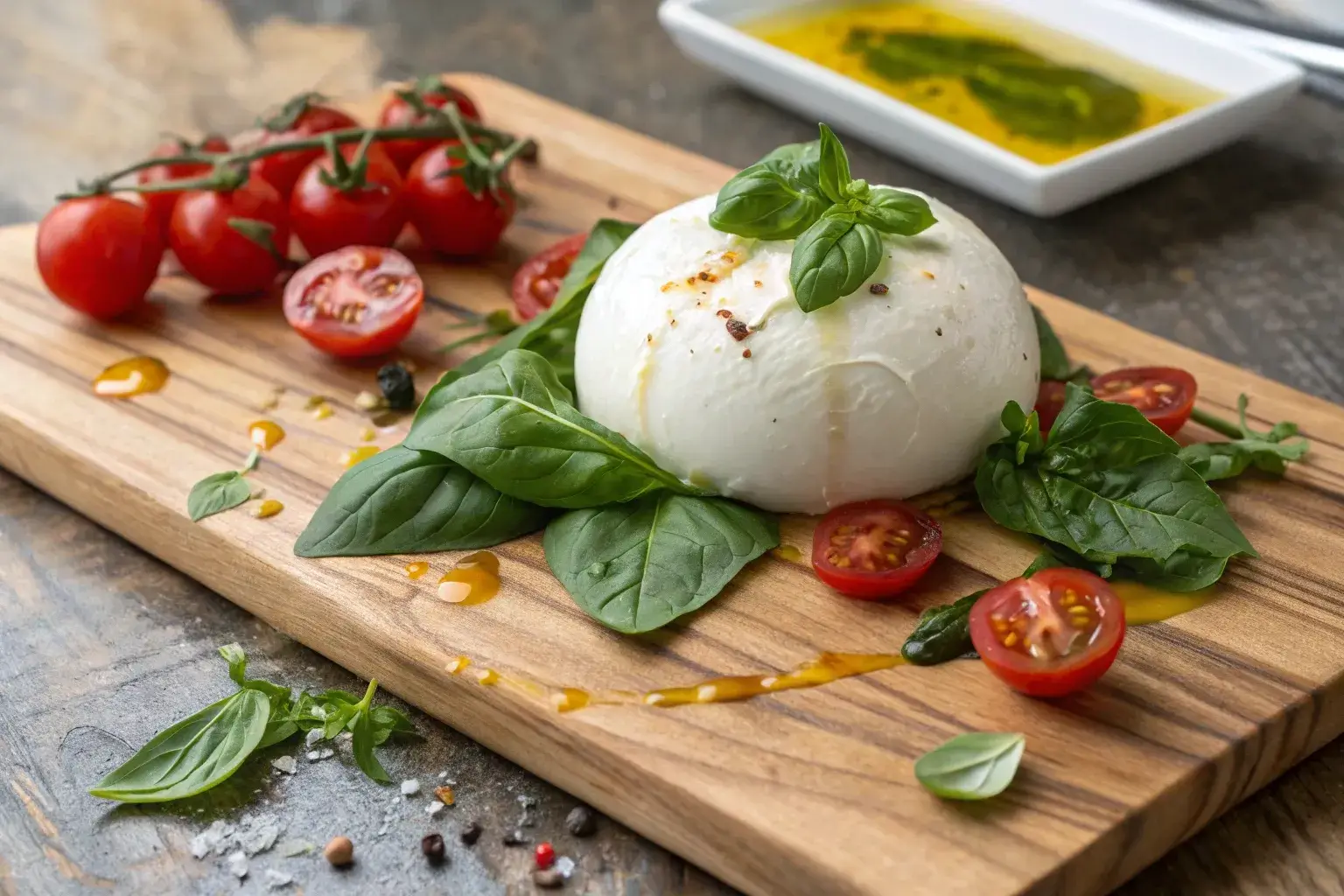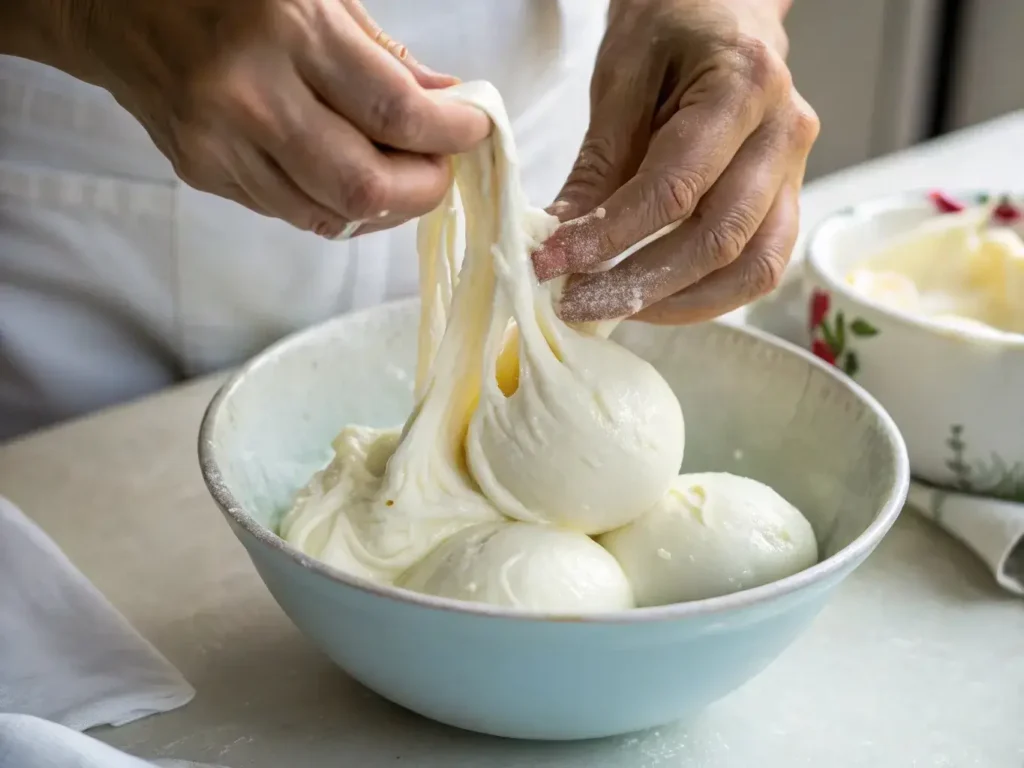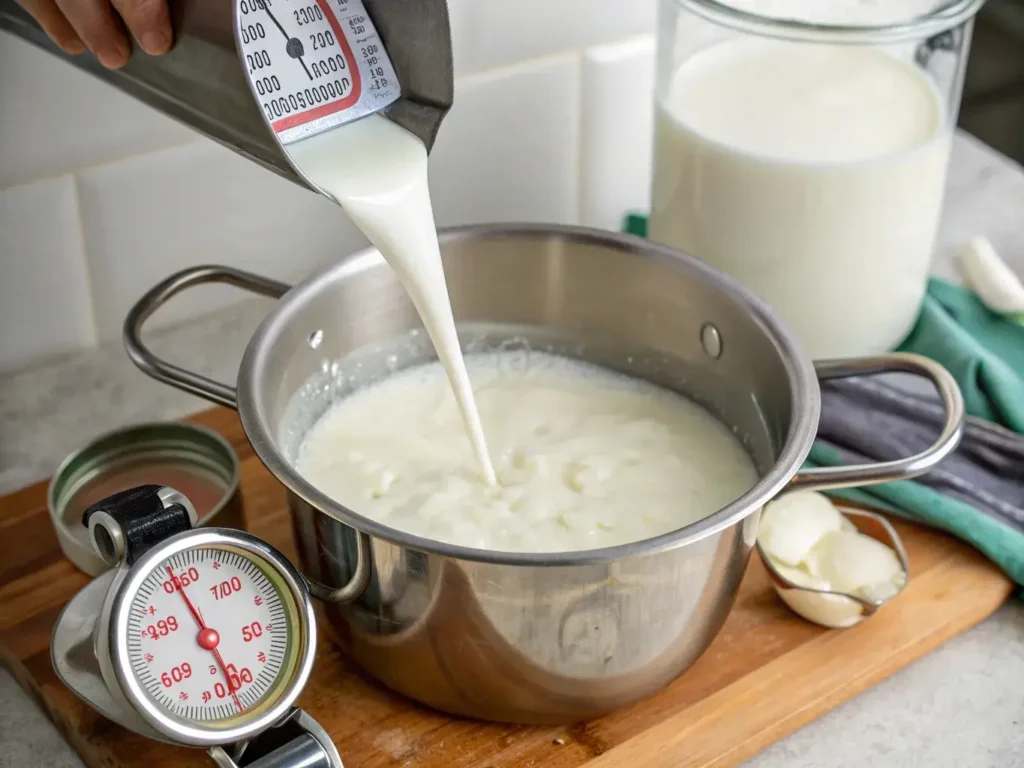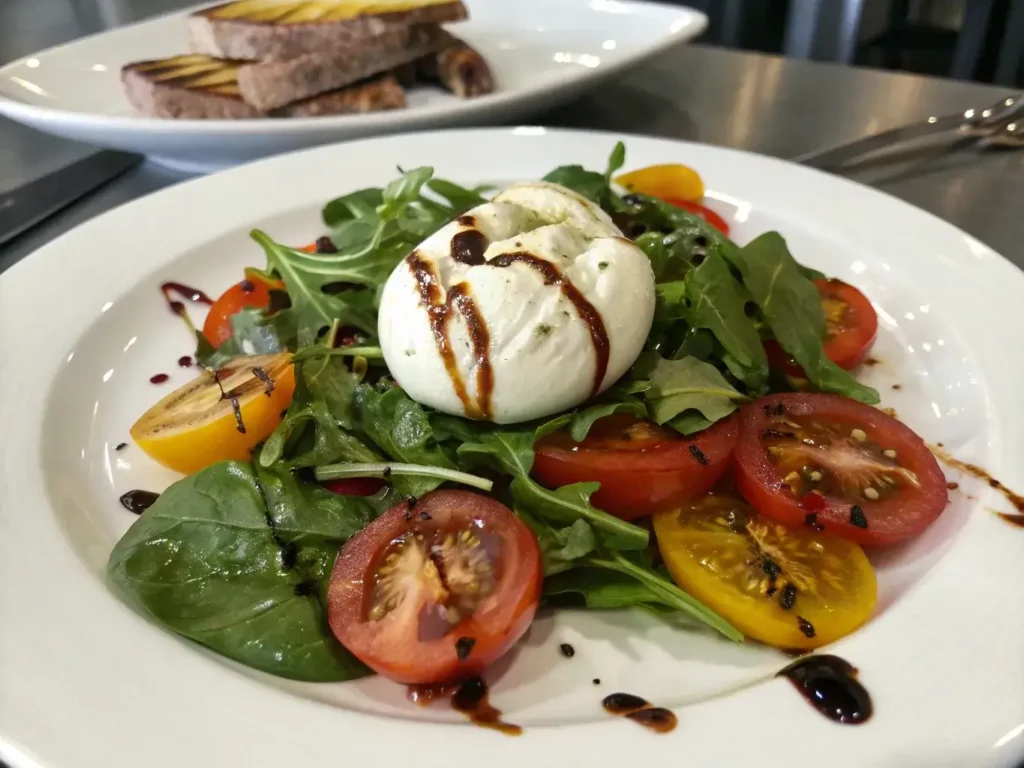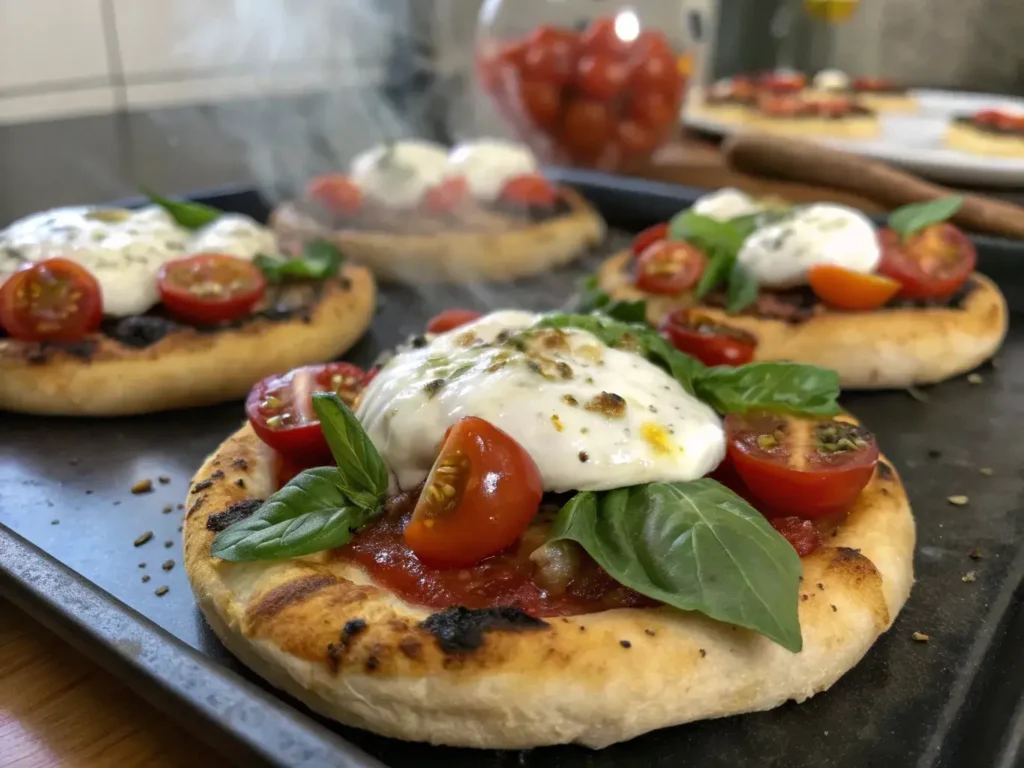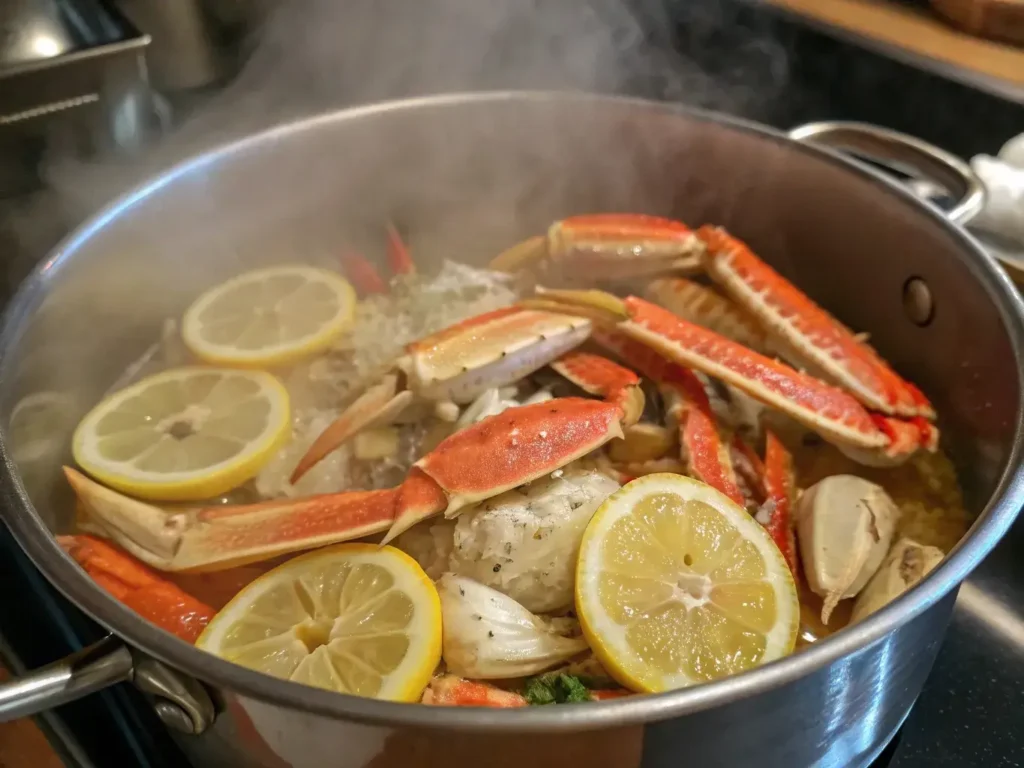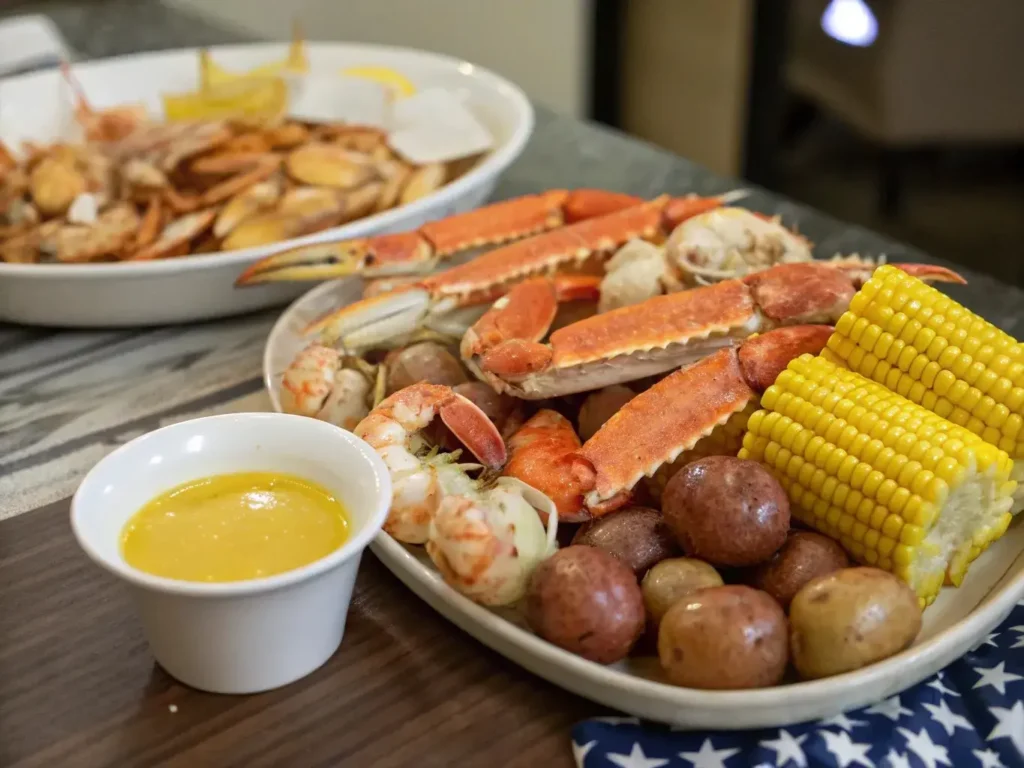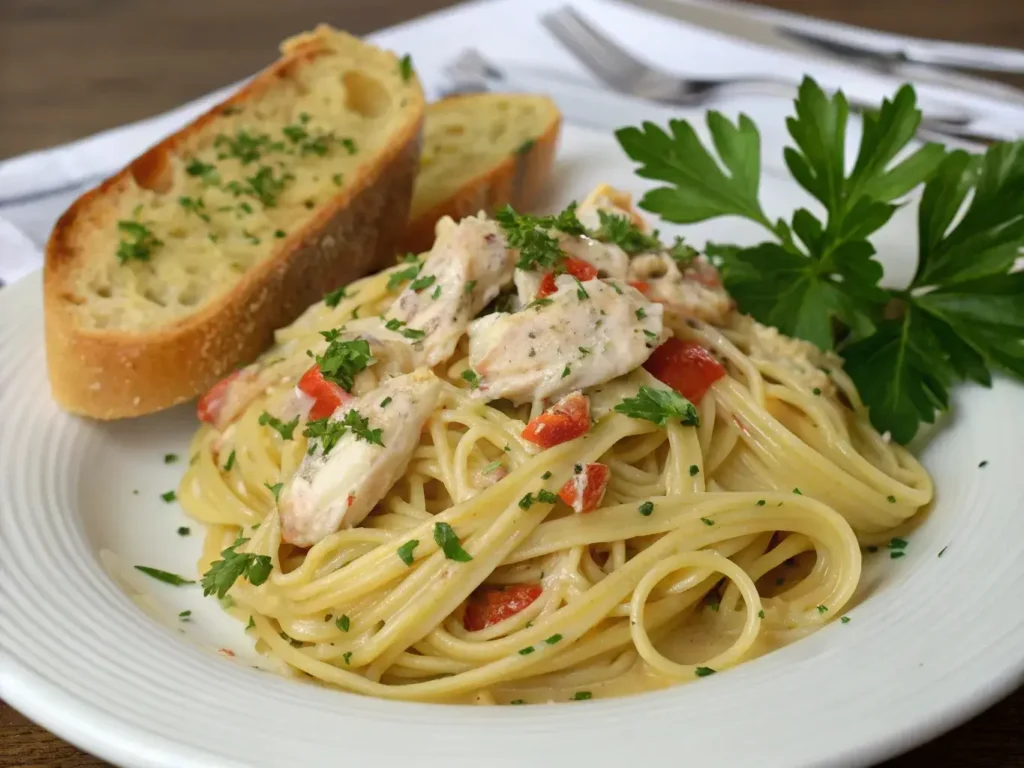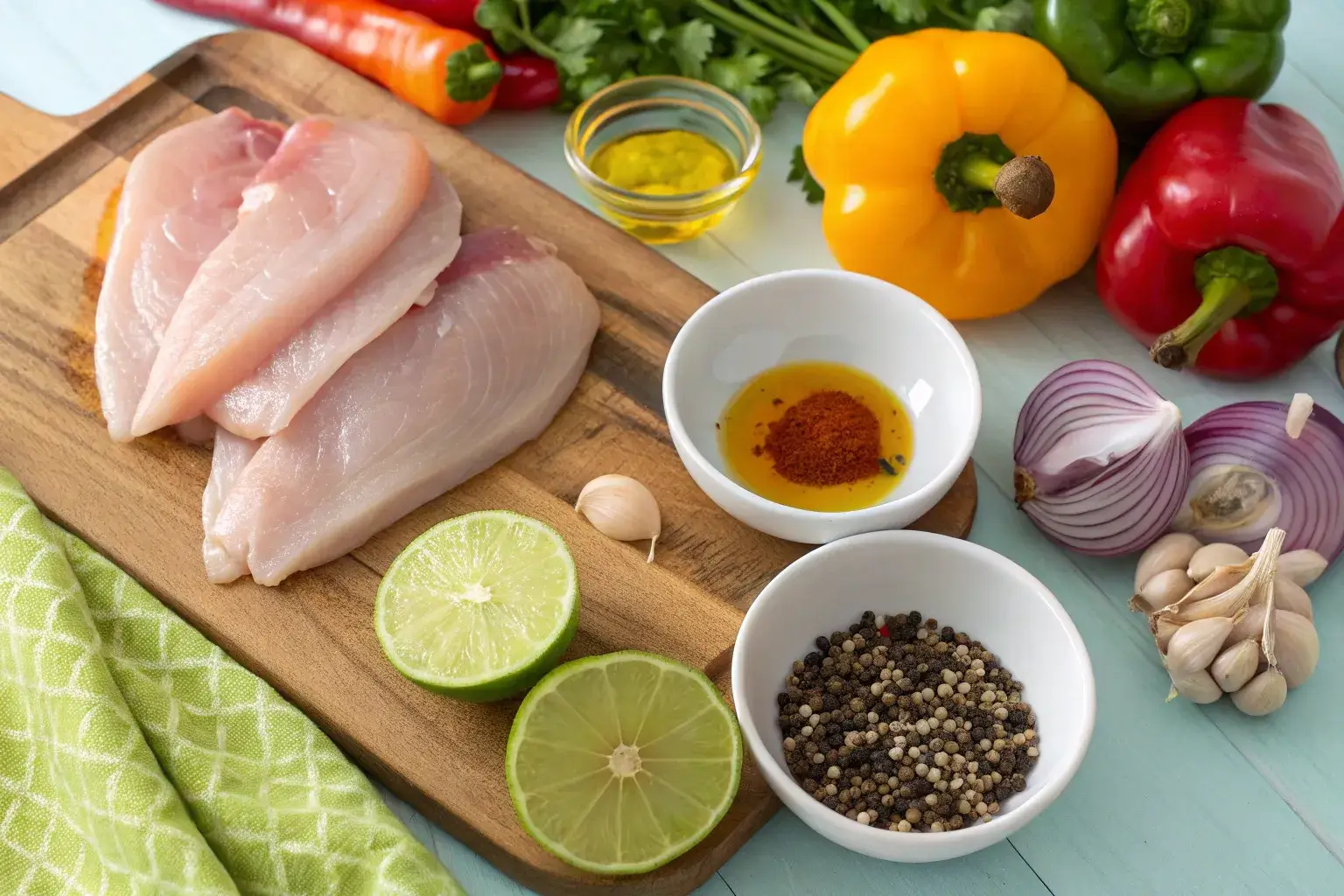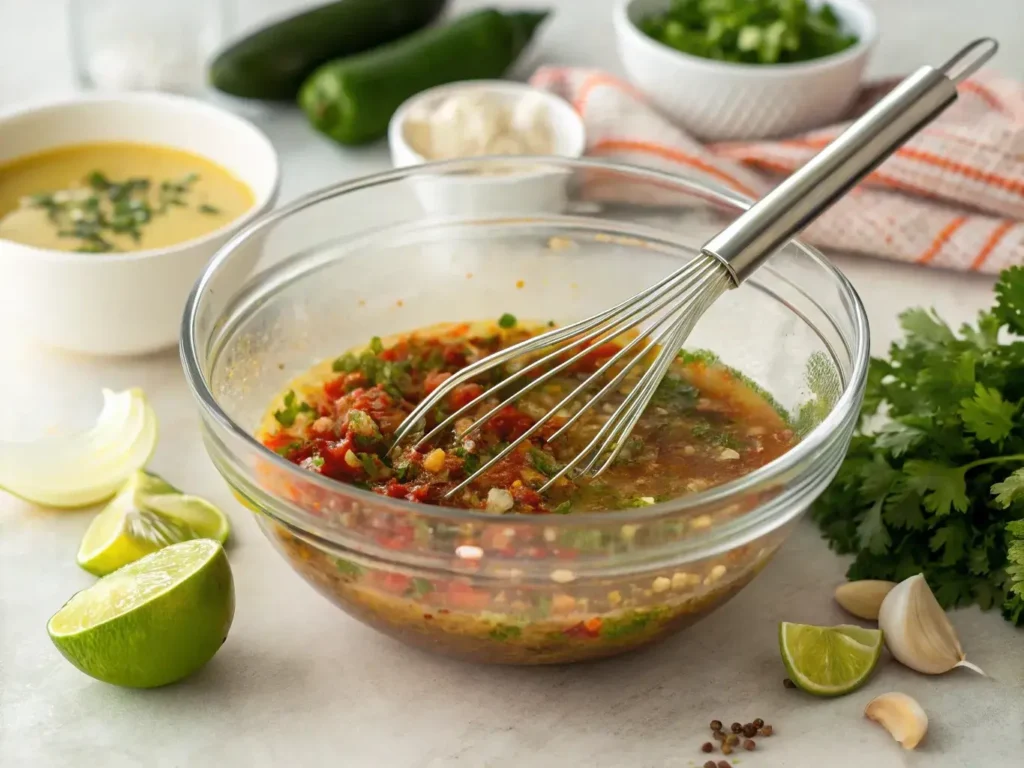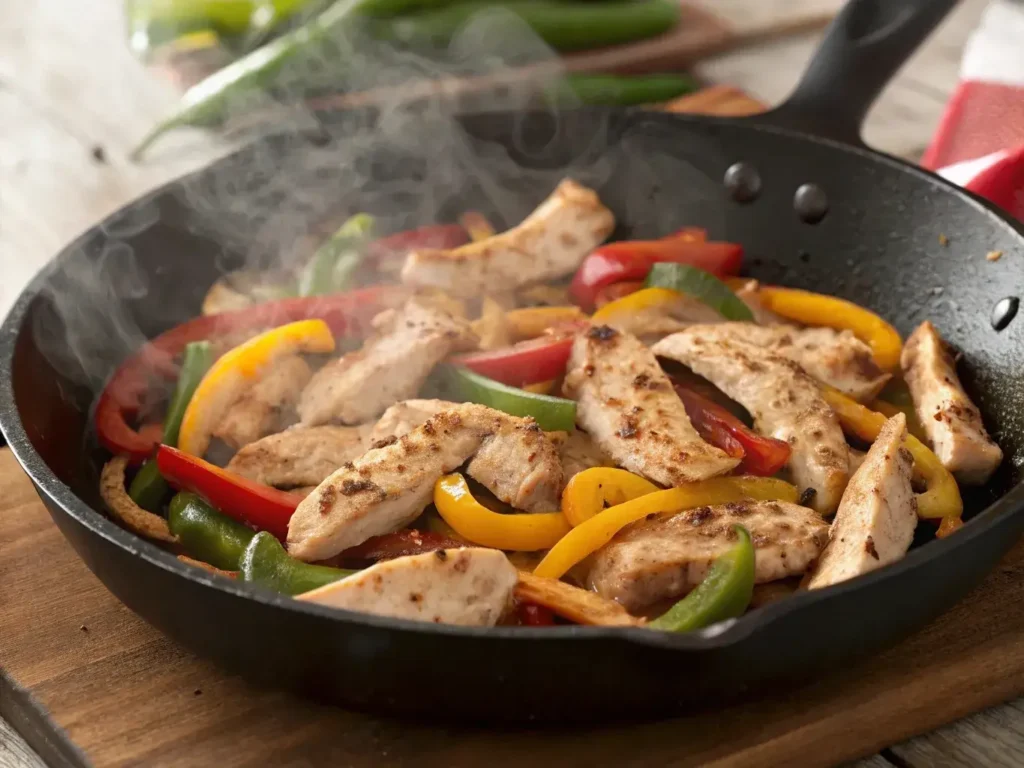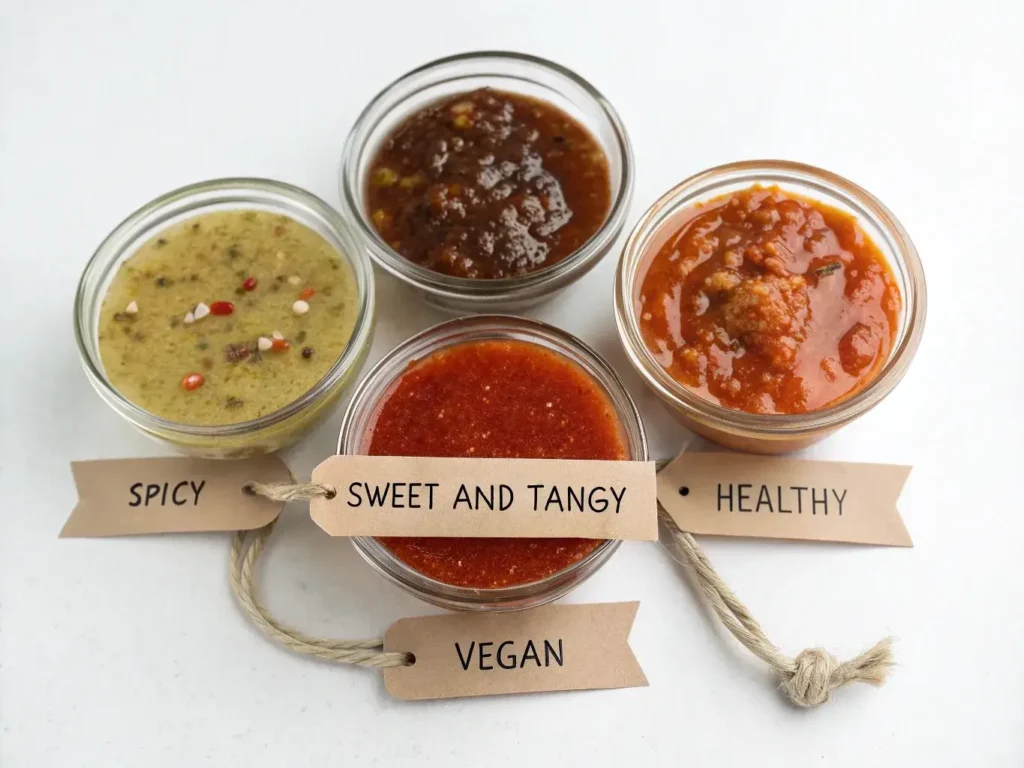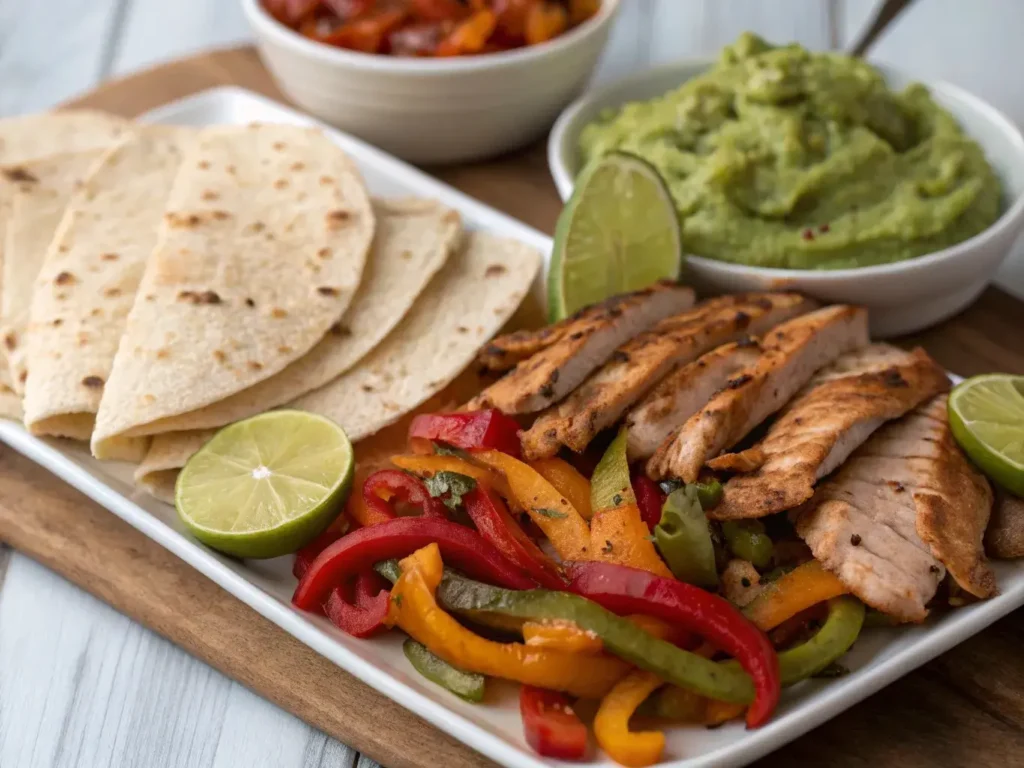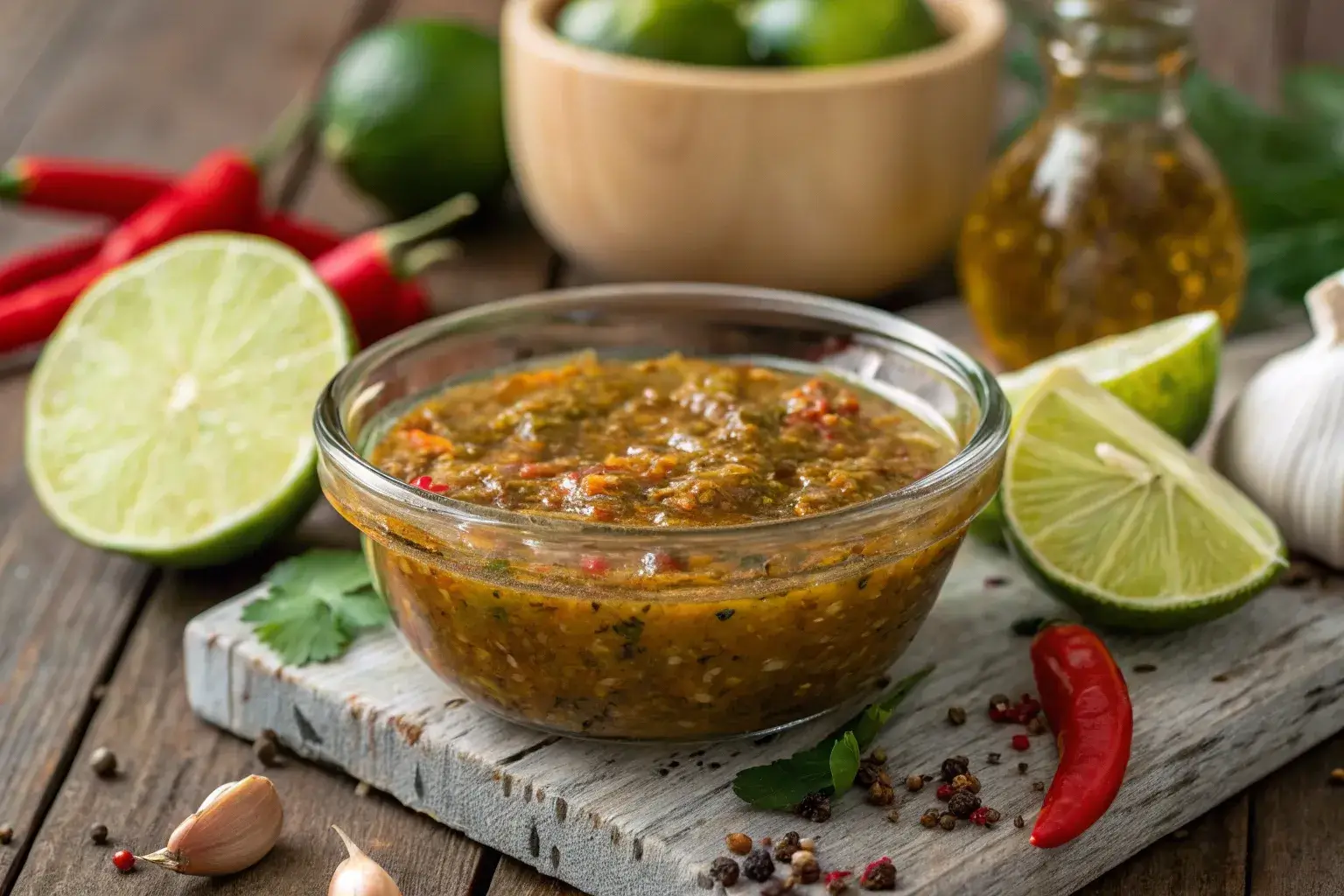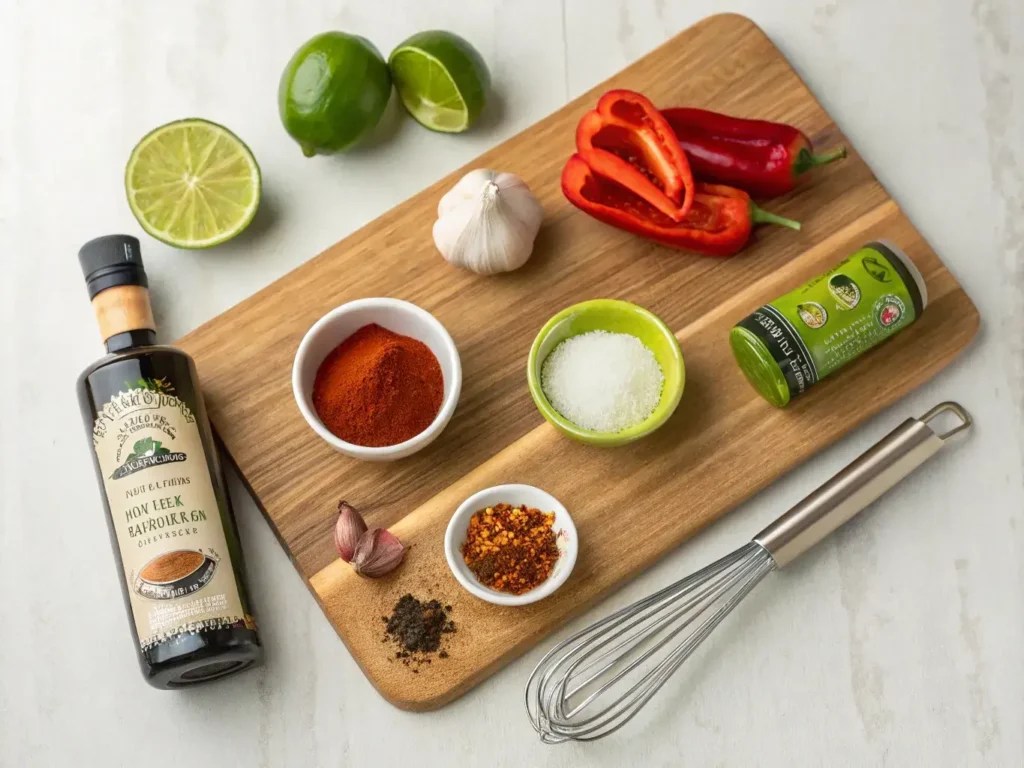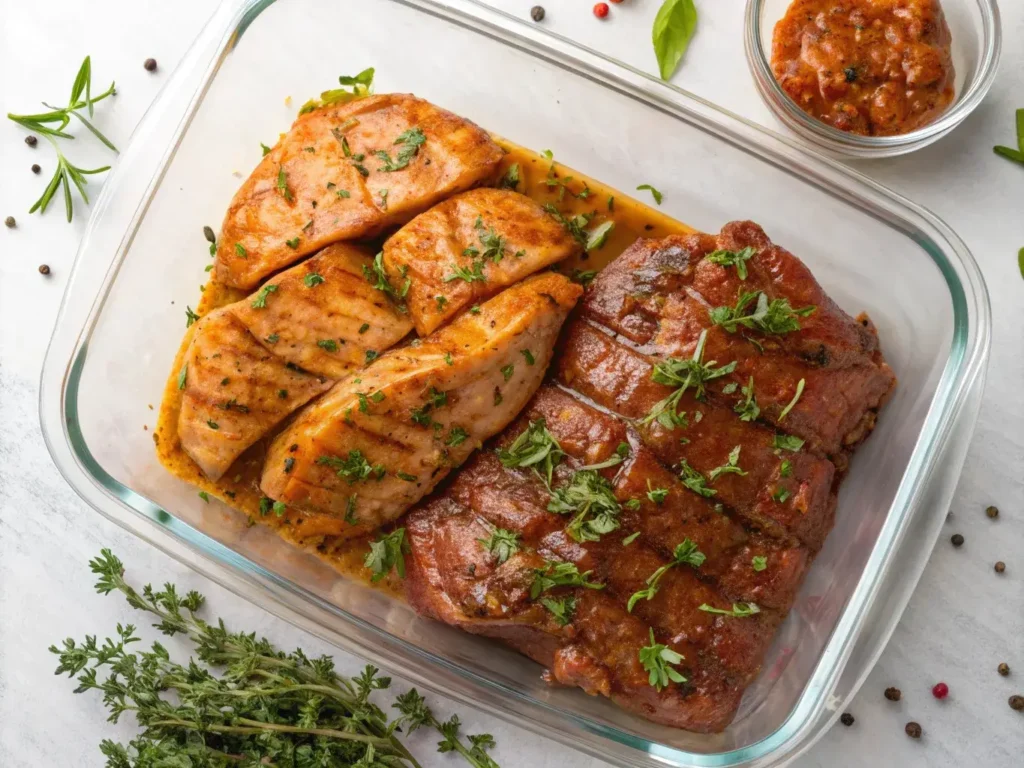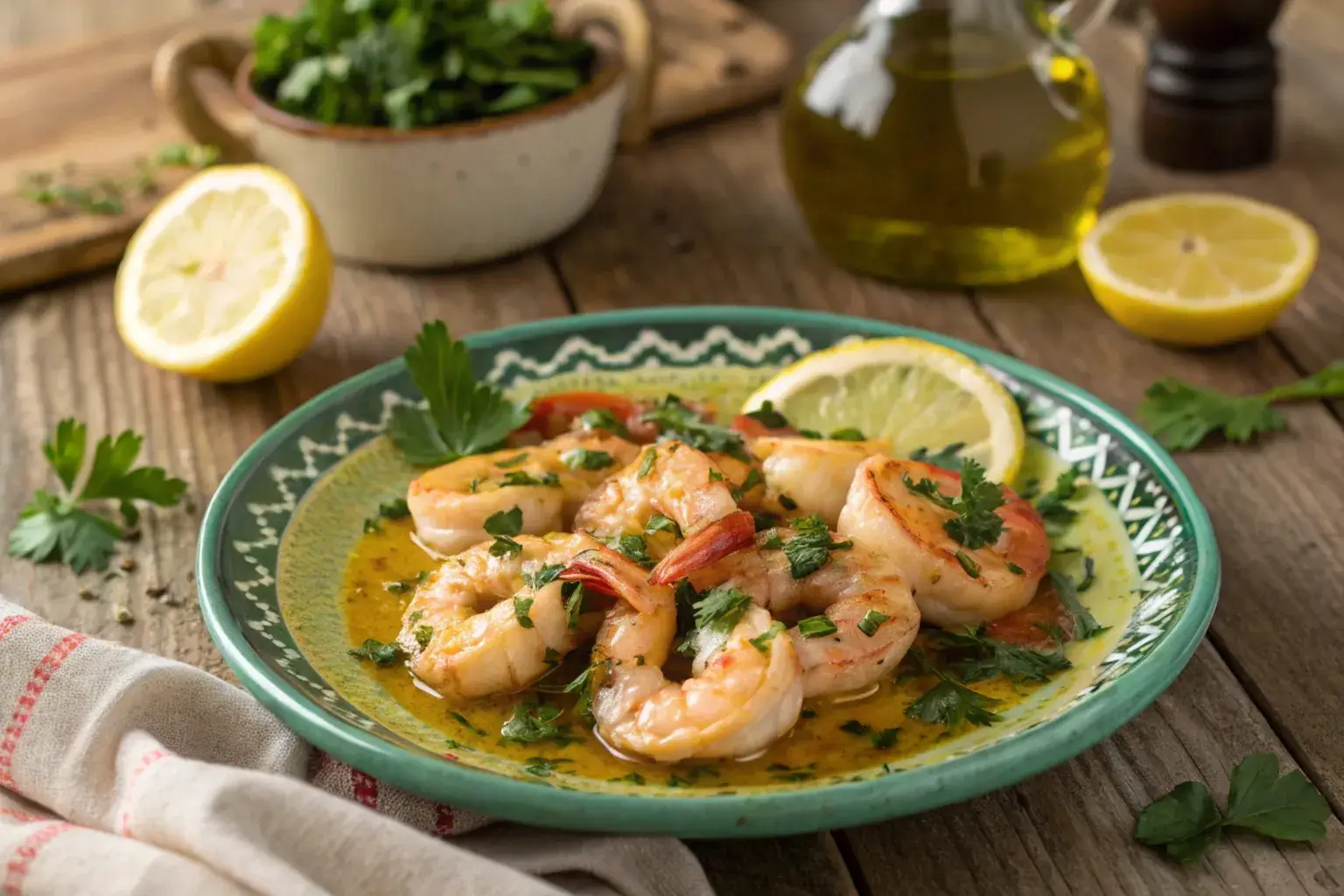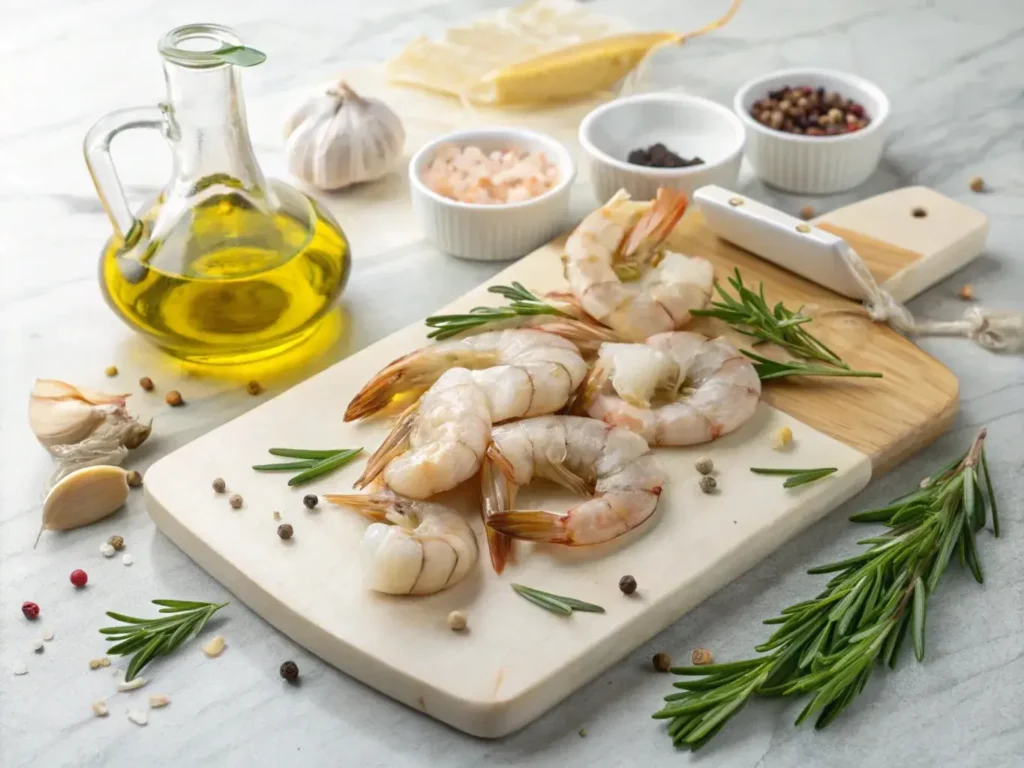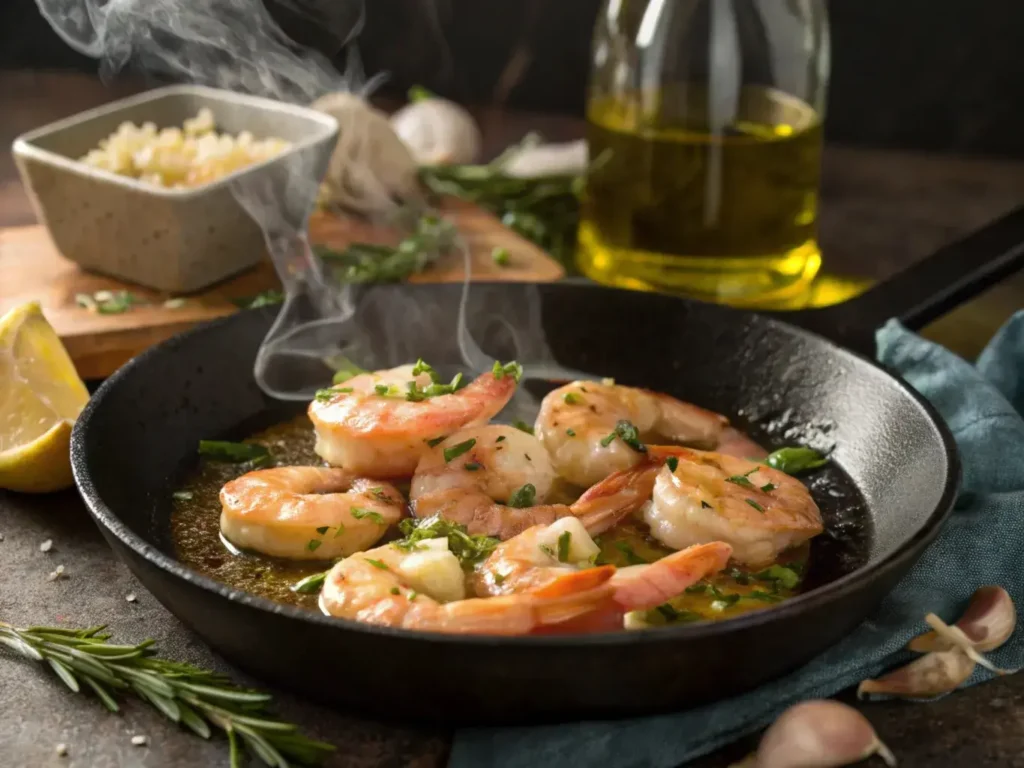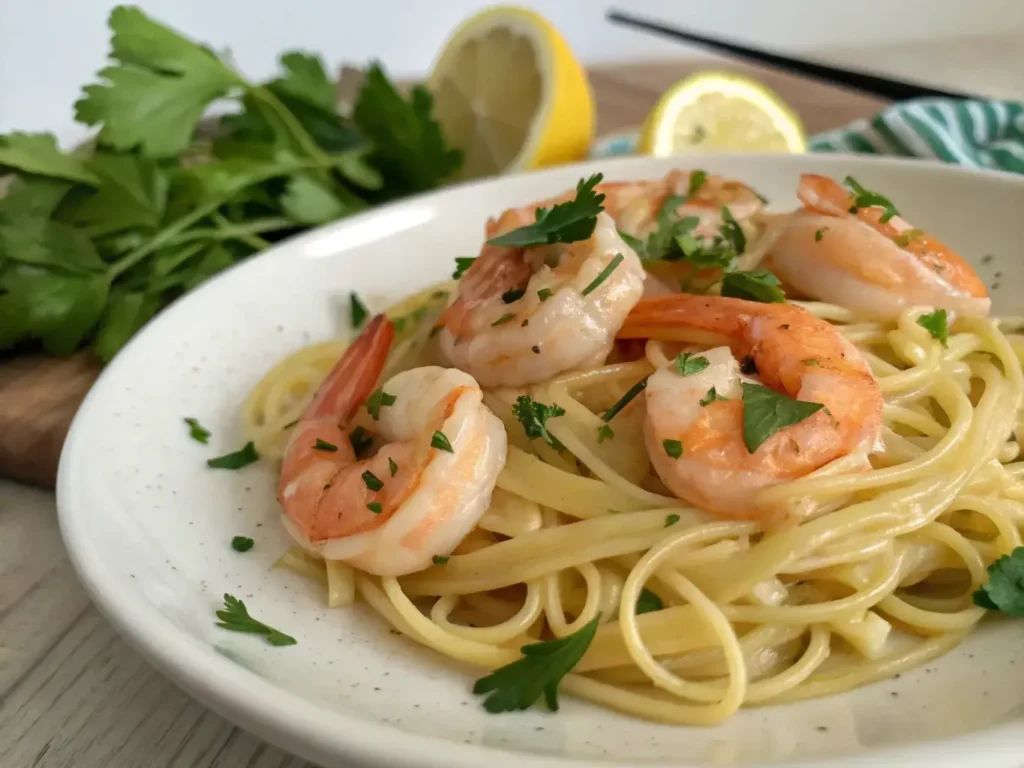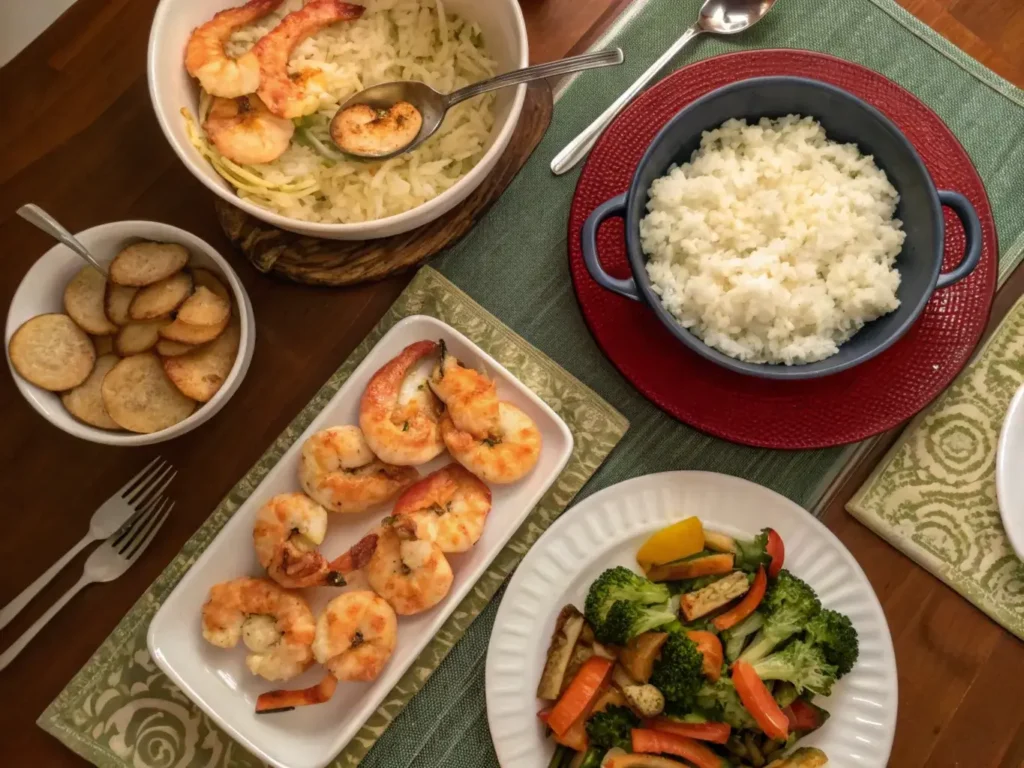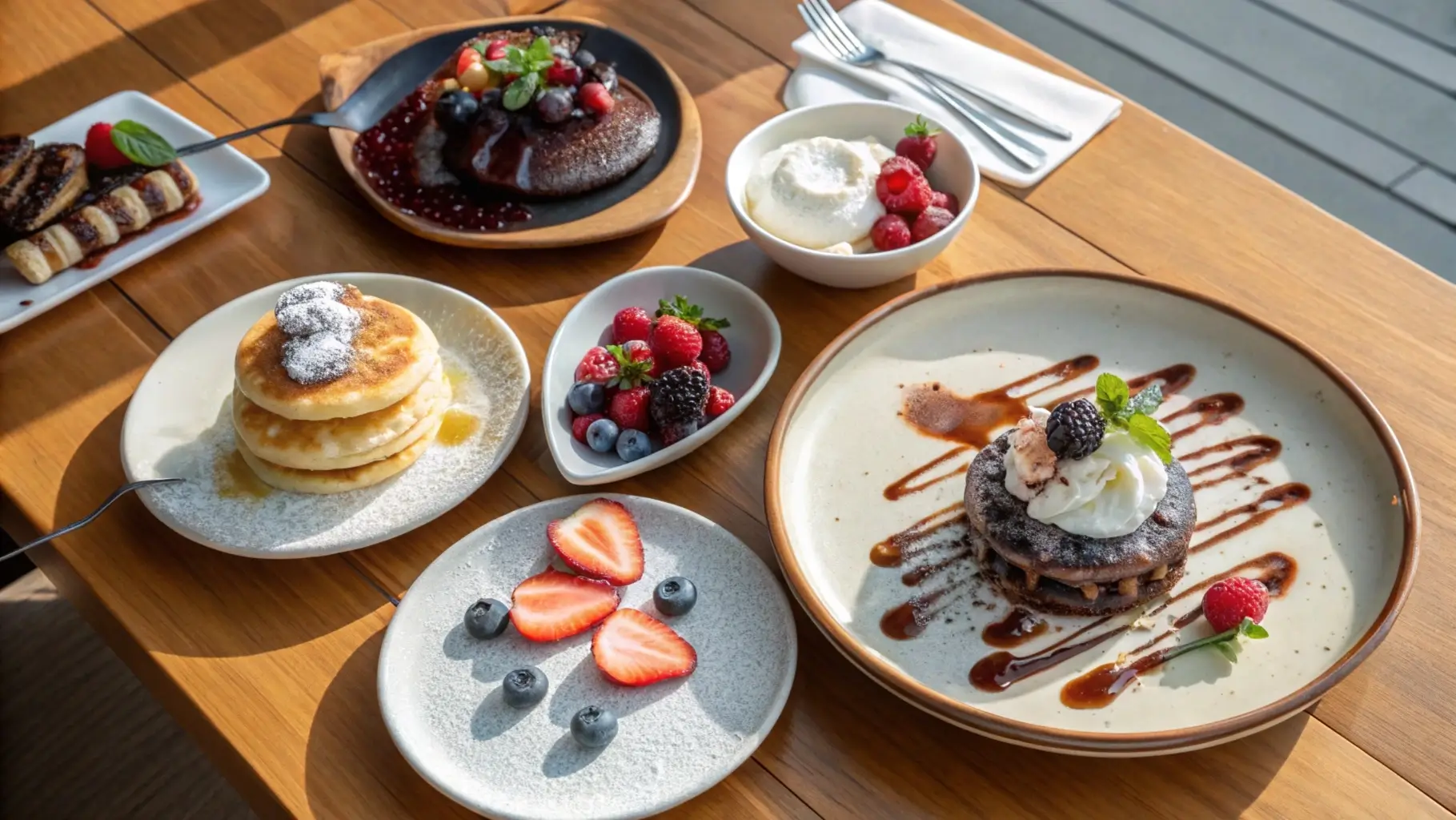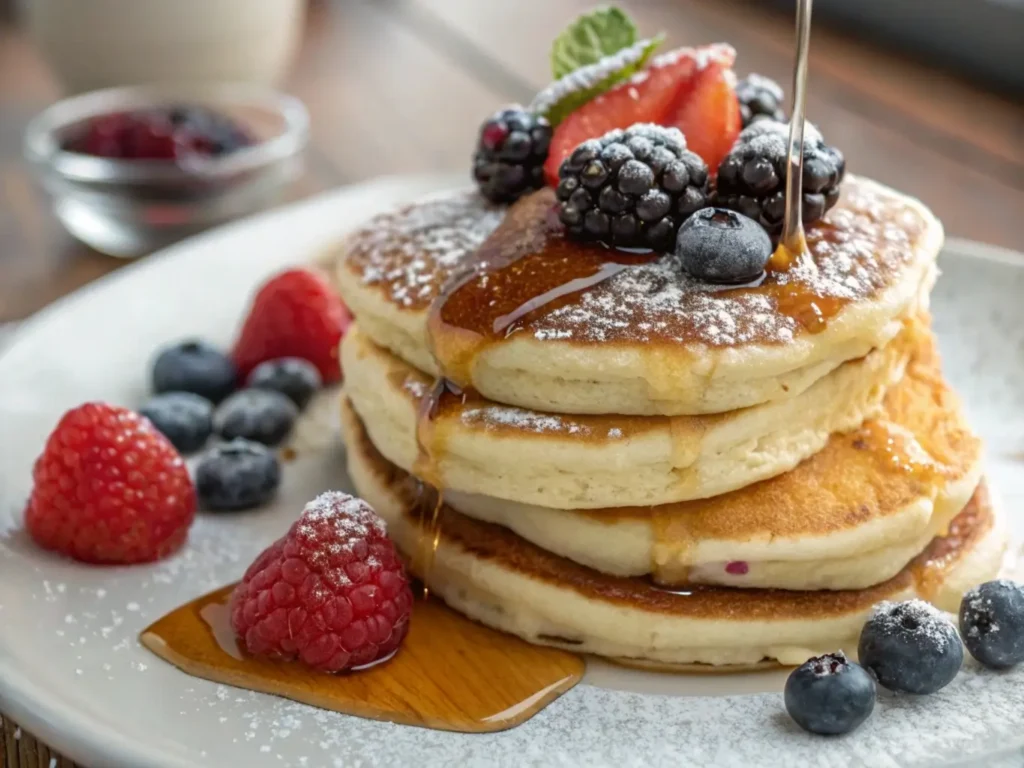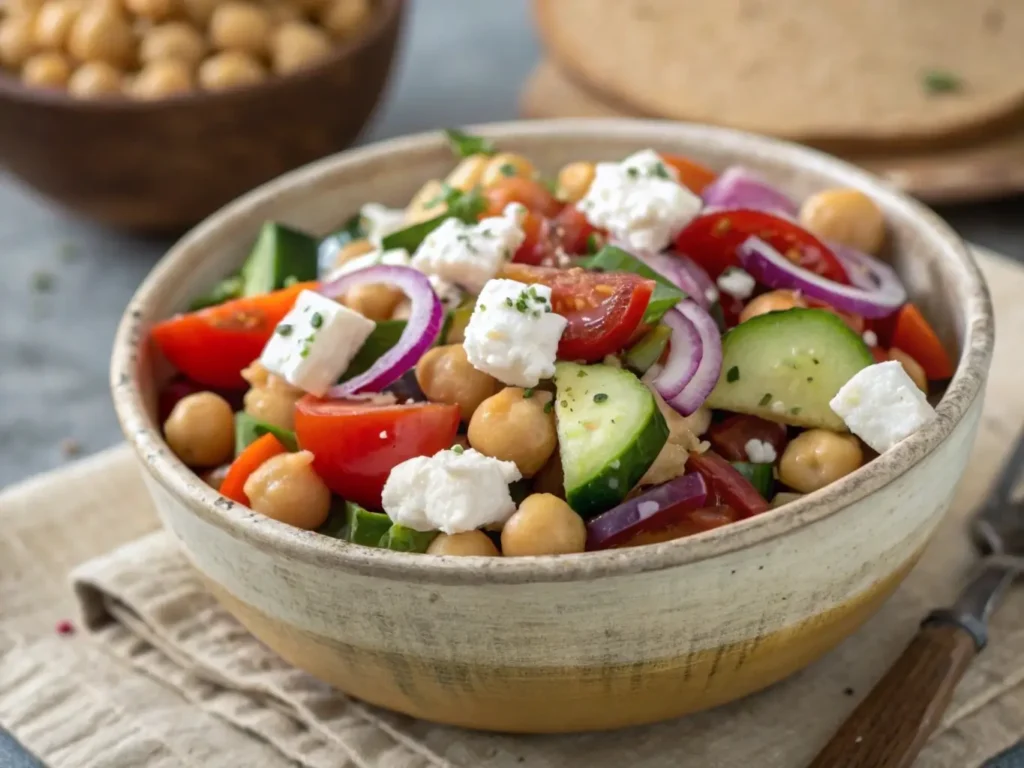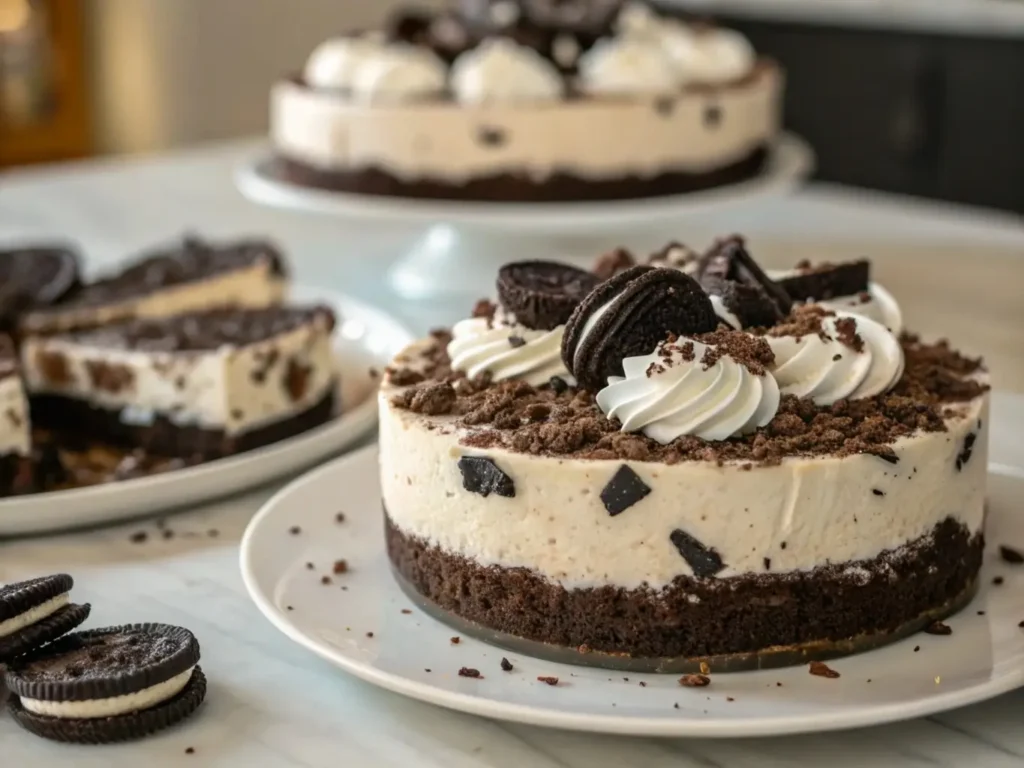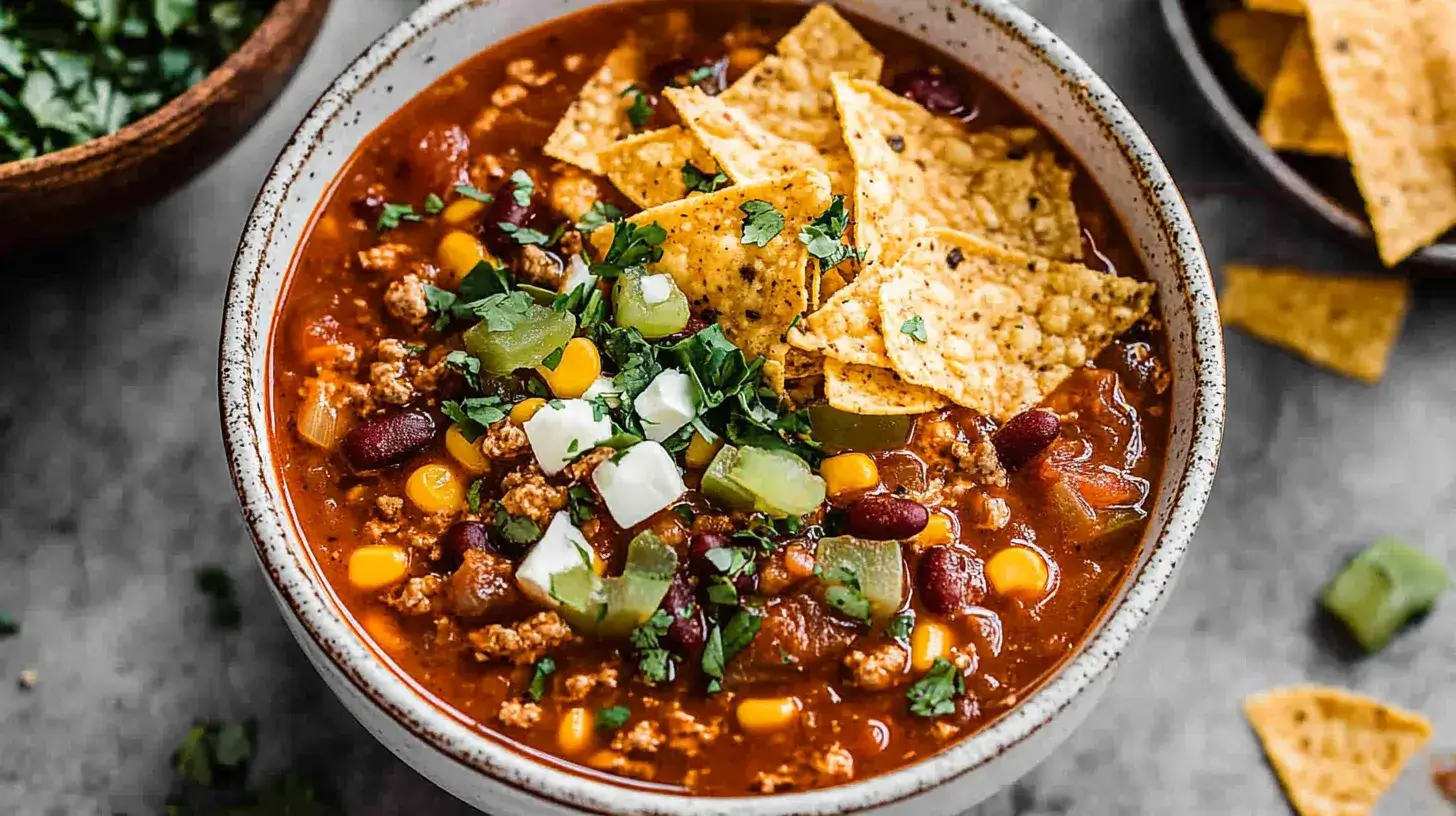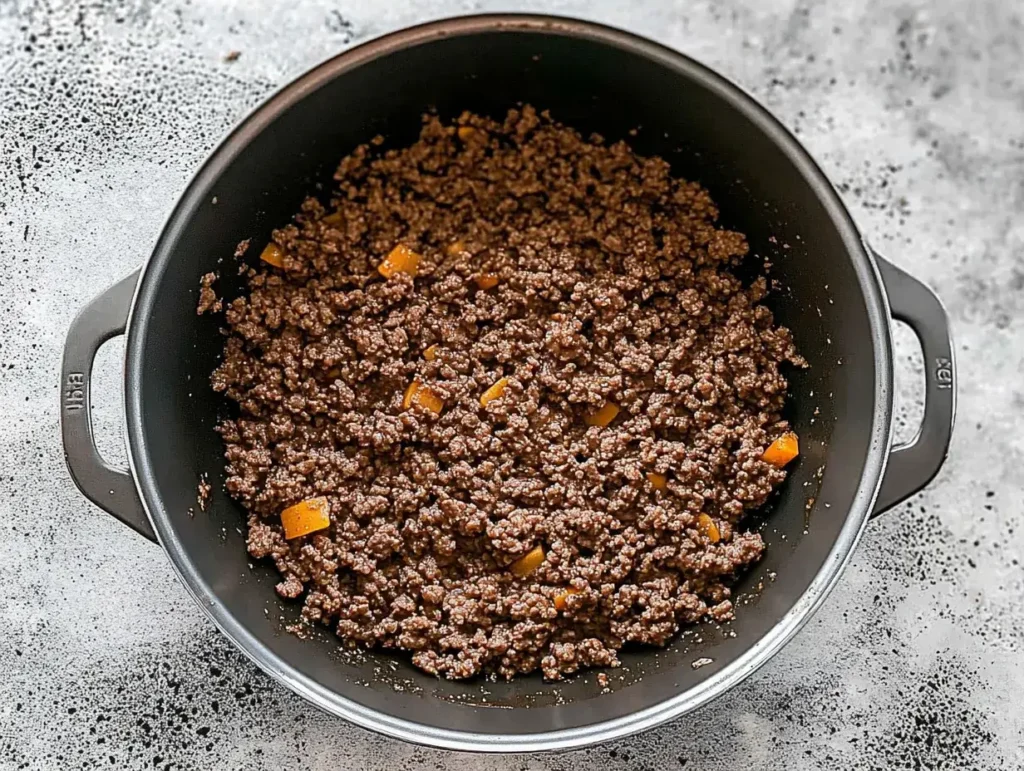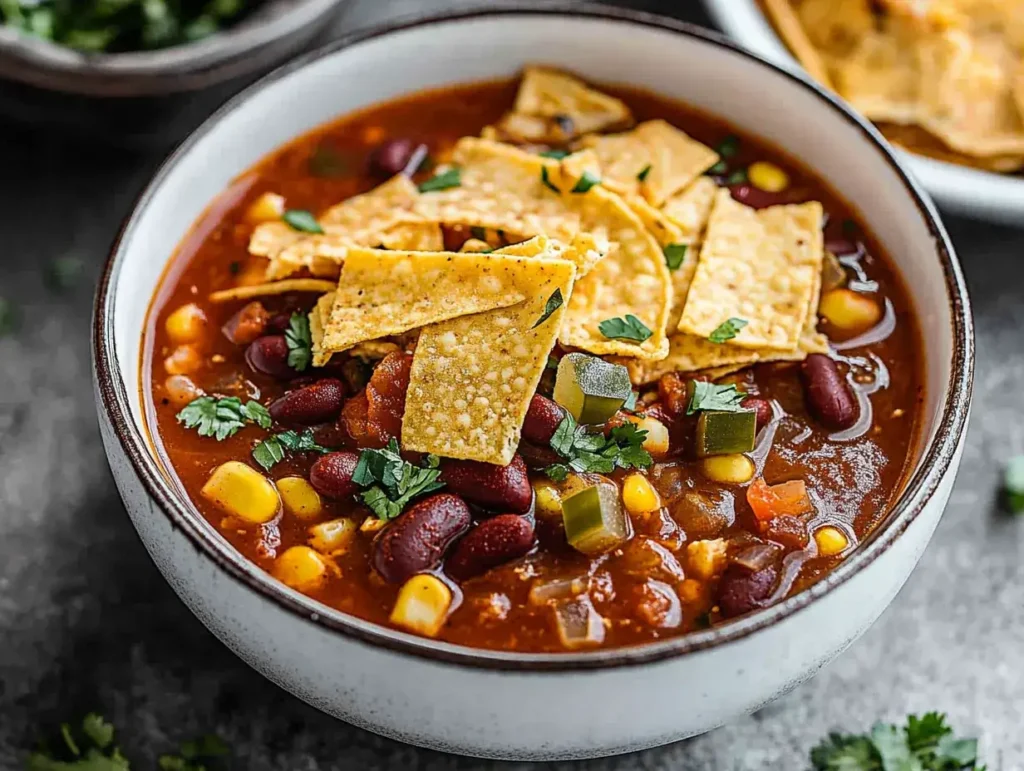Easy Dinner Ideas For Two can transform your weeknights, date nights, or cozy weekends at home. In this article, you’ll discover simple yet mouthwatering recipes designed especially for couples. Therefore, you won’t have to worry about excessive prep work or endless leftovers. By focusing on quick cooking methods, accessible ingredients, and flavorful combinations, you’ll find fresh ways to make dinnertime a delight. On the other hand, if you have dietary preferences, you can easily adapt the tips below to meet your needs. Let’s get started!
1. Quick & Easy Dinner Ideas For Two
In this section, you’ll find two speedy recipes that keep your prep time short but your taste buds satisfied. Thus, you can skip the drive-thru and enjoy homemade goodness without breaking a sweat. However, remember that fresh ingredients make a big difference, so use the best produce you can find.
1.1 Creamy One-Pot Pasta
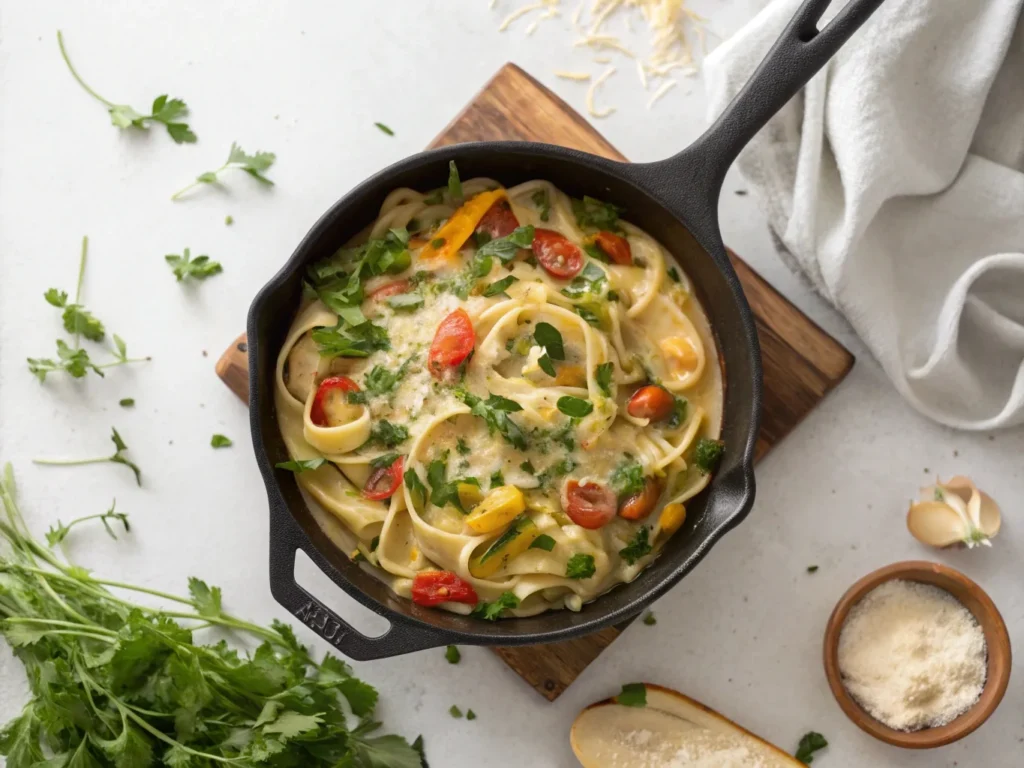
If you love rich and velvety pasta dishes, this Creamy One-Pot Pasta is for you. It requires minimal cleanup because you’ll cook everything in just one pan. Therefore, you’ll save time and effort.
- Ingredients
- 6 ounces of your favorite pasta (penne or fusilli)
- 1 cup heavy cream (or half-and-half for a lighter option)
- 1 cup vegetable or chicken broth
- 1 cup sliced mushrooms
- 1 tablespoon minced garlic
- 1 tablespoon olive oil
- Salt and pepper to taste
- Instructions
- Sauté the garlic and mushrooms in olive oil until slightly browned.
- Add pasta, broth, and cream into the same pot.
- Bring to a gentle boil, then reduce heat. Stir occasionally for 10–12 minutes or until pasta is al dente.
- Season with salt, pepper, and optional herbs like basil.
- Tips & Variations
- Swap cream with low-fat milk to reduce calories.
- Add spinach or kale for extra nutrition.
- Top with Parmesan cheese to enhance flavor.
1.2 Speedy Shrimp Tacos
Do you prefer seafood? Speedy Shrimp Tacos are a top choice for couples seeking a fresh, zesty meal. On the other hand, you can replace shrimp with fish or chicken if you like.
- Ingredients
- 12 medium shrimp, peeled and deveined
- 1 tablespoon chili powder
- 1 teaspoon cumin
- 2 tablespoons fresh lime juice
- 1 tablespoon olive oil
- 4 small tortillas
- Optional toppings: shredded cabbage, chopped tomatoes, and cilantro
- Instructions
- Toss shrimp in olive oil, chili powder, cumin, and lime juice.
- In a heated skillet, cook shrimp for about 2 minutes per side or until pink.
- Warm tortillas in a separate pan.
- Fill each tortilla with shrimp and your favorite toppings.
- Tips & Variations
- Use Greek yogurt or sour cream as a tangy drizzle.
- Add avocado slices or pico de gallo for extra flair.
- For spice lovers, toss in a pinch of cayenne pepper.
1.3 Essential Pantry Staples
Before you start cooking these Easy Dinner Ideas For Two, it helps to keep essential staples in your pantry. In addition, well-stocked cabinets minimize last-minute grocery runs.
- Common pantry items: pasta, rice, canned tomatoes, and spices like paprika or oregano
- Versatile proteins: canned tuna, dried lentils, or vacuum-sealed tofu
- Flavor boosters: olive oil, vinegar, low-sodium soy sauce, and lemon juice
1.4 Time-Saving Hacks for Busy Evenings
When you’re short on time, it’s crucial to streamline your process. Thus, planning ahead can save you from stress.
- Prep Ingredients in Advance: Chop veggies and marinate proteins beforehand.
- Use Freezer-Friendly Items: Frozen shrimp, peas, or corn defrost quickly.
- Cook in Batches: Make a double batch and freeze half for another day.
check out our Cube Steak in Crock Pot: Comfort Food Done Right
2. Budget-Friendly Meals for Couples
Cooking Easy Dinner Ideas For Two don’t have to break the bank. In fact, by choosing cost-effective ingredients and portion sizes, you’ll enjoy comforting dishes while staying within your budget. Therefore, you’ll have extra money for dessert or next weekend’s fun activities.
2.1 Simple Tuna and Rice Bake
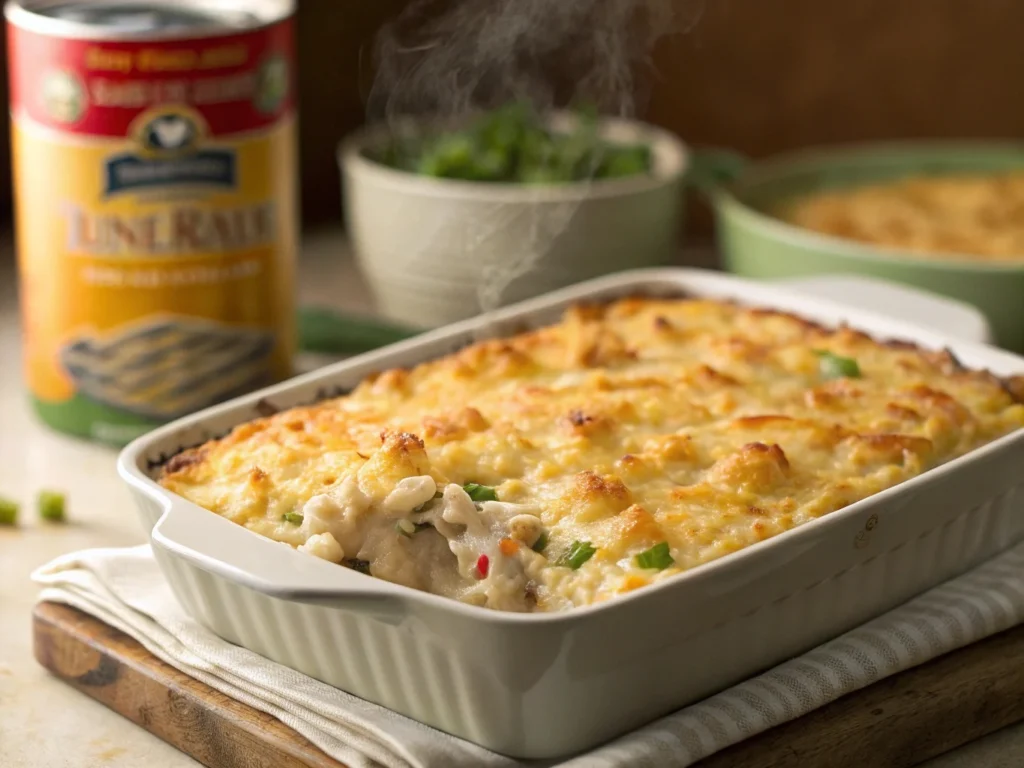
If you’re looking for a hearty meal without expensive cuts of meat, Tuna and Rice Bake is an excellent option. However, you can swap the tuna with canned salmon if it’s on sale.
- Ingredients
- 2 cups cooked rice (white or brown)
- 1 can tuna, drained
- 1 cup mixed vegetables (frozen or fresh)
- 1 can cream of mushroom soup (low-sodium)
- ½ cup shredded cheese (Cheddar or mozzarella)
- Instructions
- Combine rice, tuna, vegetables, and soup in a mixing bowl.
- Transfer to a greased baking dish.
- Top with shredded cheese and bake at 375°F (190°C) for 15 minutes or until bubbly.
- Tips & Variations
- Use leftover rice to speed up the process.
- Add sautéed onions or mushrooms for extra flavor.
- Try whole-grain rice for added fiber.
2.2 Veggie-Packed Lentil Soup
Soup can be both filling and economical. Thus, Veggie-Packed Lentil Soup is a top contender for cold evenings or as a lunch leftover.
- Ingredients
- 1 cup dried lentils, rinsed
- 4 cups vegetable broth
- 1 can diced tomatoes (low-sodium)
- 1 cup chopped carrots
- 1 cup chopped celery
- 1 tablespoon tomato paste
- Salt, pepper, and herbs (thyme or rosemary)
- Instructions
- Sauté carrots, celery, and any additional veggies in a large pot.
- Add lentils, broth, diced tomatoes, and tomato paste.
- Simmer for 20–25 minutes or until lentils are tender.
- Season with salt, pepper, and herbs.
- Tips & Variations
- Substitute broth with water if needed, but adjust seasonings.
- Blend half the soup for a creamier texture.
- Serve with whole-grain bread or crackers.
For more nutrition details on lentils, visit EatRight.org to see why they’re considered a powerhouse ingredient.
2.3 Smart Ingredient Swaps
Keeping your budget in check often means using what you already have at home. In addition, you can make small ingredient swaps to cut costs without sacrificing taste.
- Use canned beans instead of fresh meat
- Opt for seasonal produce for lower prices
- Choose store-brand spices and sauces
3. Easy Dinner Ideas For Two: Flavor and Ease Combined
When you crave that special date-night vibe, Easy Dinner Ideas For Two at home can do wonders. Indeed, these Easy Dinner Ideas For Two bring both style and simplicity to your kitchen. However, you don’t need to spend hours cooking to make a meal unforgettable.
3.1 Garlic Butter Steak Bites
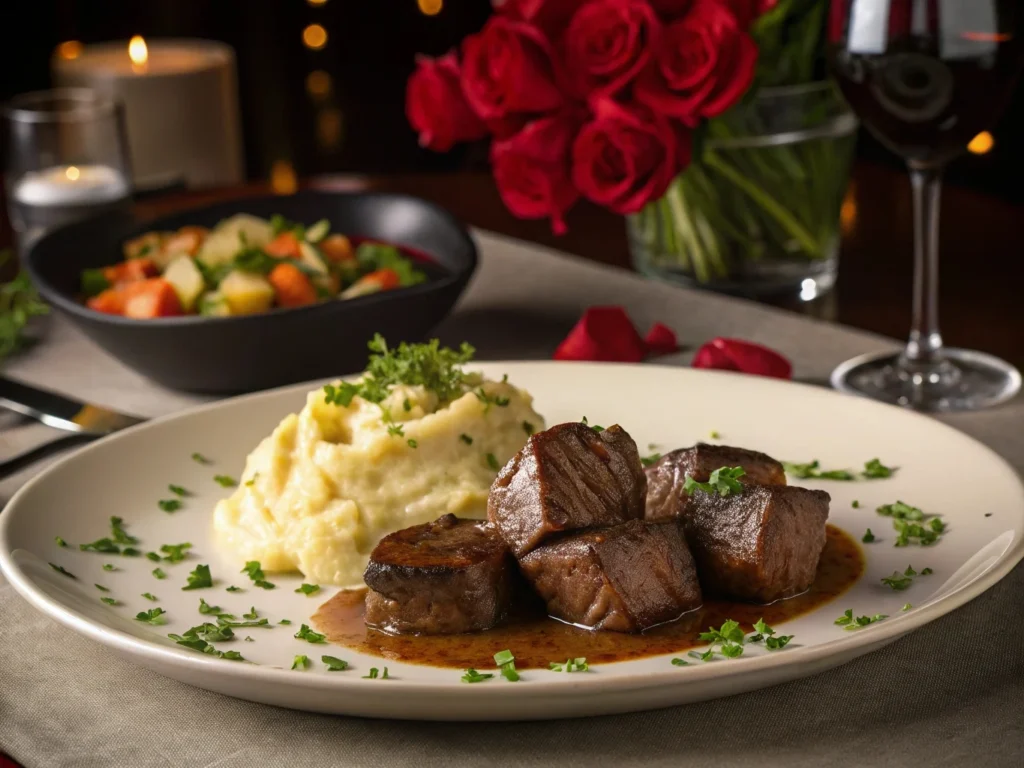
Steak dinners are synonymous with romance. Therefore, Garlic Butter Steak Bites deliver high-end flavors in a fraction of the time.
- Ingredients
- ½ pound sirloin steak, cubed
- 2 tablespoons butter
- 2 cloves garlic, minced
- Salt, pepper, and parsley
- Instructions
- Season steak cubes with salt and pepper.
- In a hot skillet, melt butter and sauté garlic until fragrant.
- Add steak bites, searing each side for about 2 minutes.
- Garnish with fresh parsley.
- Tips & Variations
- Pair with mashed potatoes or a simple salad.
- Use a meat thermometer to ensure perfect doneness.
- Substitute butter with a vegan alternative if needed.
3.2 Creamy Risotto for Two
Risotto may seem fancy, but it’s surprisingly straightforward. Thus, you can impress your partner without unnecessary stress.
- Ingredients
- ¾ cup Arborio rice
- 3 cups warm chicken or vegetable broth
- ½ cup white wine (optional but recommended)
- 1 small onion, finely chopped
- 2 tablespoons butter or olive oil
- ¼ cup grated Parmesan cheese
- Instructions
- Sauté onion in butter or oil until translucent.
- Stir in Arborio rice, coating grains with fat.
- Add wine and let it evaporate, stirring often.
- Gradually add warm broth, one ladle at a time, until absorbed.
- Stir in Parmesan cheese and season with salt and pepper.
- Tips & Variations
- Add mushrooms, spinach, or sun-dried tomatoes for extra flair.
- Use nutritional yeast instead of Parmesan for a dairy-free version.
- Stir consistently to achieve a creamy texture.
3.3 Setting the Mood
Part of a romantic dinner is the ambiance. In addition, small touches can elevate the overall experience.
- Dim the lights or use candles
- Play soft background music
- Garnish plates with fresh herbs or edible flowers
3.4 Recommended Wine Pairings
Wine can enhance flavors, but you don’t have to be a sommelier to choose a good bottle. On the other hand, you can opt for something light and fruity if you’re unsure.
- White wine (Pinot Grigio) for risotto or fish
- Red wine (Merlot or Cabernet) for steak or hearty dishes
- Sparkling rosé for a festive touch
4. Healthy Easy Dinner Ideas For Two: Nutritious and Delicious
Balancing flavor and nutrition can be challenging. However, Easy Dinner Ideas For Two prove it’s entirely possible. You’ll find vibrant veggies, lean proteins, and fiber-rich grains to keep you and your partner feeling great.
4.1 Zucchini Noodle Stir-Fry
Zucchini Noodles are a fantastic way to reduce carbs. Therefore, this dish is light, quick, and full of vegetables.
- Ingredients
- 2 medium zucchinis, spiralized
- 1 cup sliced bell peppers
- 1 cup sliced carrots
- 1 tablespoon low-sodium soy sauce
- 1 clove garlic, minced
- 1 teaspoon sesame oil
- Instructions
- In a wok or large skillet, sauté bell peppers and carrots until tender.
- Add spiralized zucchini, garlic, and soy sauce. Stir-fry for 2–3 minutes.
- Drizzle with sesame oil before serving.
- Tips & Variations
- Add tofu or chicken for extra protein.
- Use tamari for a gluten-free option.
- Mix in a teaspoon of chili paste if you like heat.
4.2 Baked Salmon with Roasted Veggies
Rich in omega-3 fatty acids, salmon is both healthy and delicious. In addition, roasting veggies alongside the fish simplifies cleanup.
- Ingredients
- 2 salmon fillets (about 4–6 ounces each)
- 2 cups mixed veggies (broccoli, zucchini, or asparagus)
- 1 tablespoon olive oil
- Salt, pepper, lemon juice
- Instructions
- Preheat oven to 400°F (200°C).
- Season salmon with salt, pepper, and a squeeze of lemon juice.
- Toss veggies with olive oil, salt, and pepper.
- Place salmon and veggies on a baking sheet. Bake for 12–15 minutes or until salmon flakes easily.
- Tips & Variations
- Add fresh dill or thyme for extra flavor.
- Try sweet potatoes or bell peppers for variety.
- Use parchment paper or foil for easy cleanup.
4.3 Portion Control and Balanced Plates
A healthy meal isn’t just about the ingredients but also the portion sizes. Thus, keep a balanced plate in mind.
- Aim for half the plate with veggies
- One-quarter with whole grains
- One-quarter with lean protein
4.4 Meal Prep for Health-Conscious Couples
If you and your partner want to maintain healthy eating habits, prepping in advance can help. On the other hand, you can store pre-portioned meals in airtight containers for busy nights.
- Chop salads and store dressings separately
- Use sealable bags to marinate proteins overnight
- Label containers with dates for fresh consumption
5. Satisfying One-Pan Wonders for Two
Cooking everything in a single pan or sheet is a dream for busy couples. Not only does it simplify prep, but it also cuts down on dishes. Therefore, you’ll spend more time together and less time scrubbing.
5.1 One-Pan Chicken and Veggies
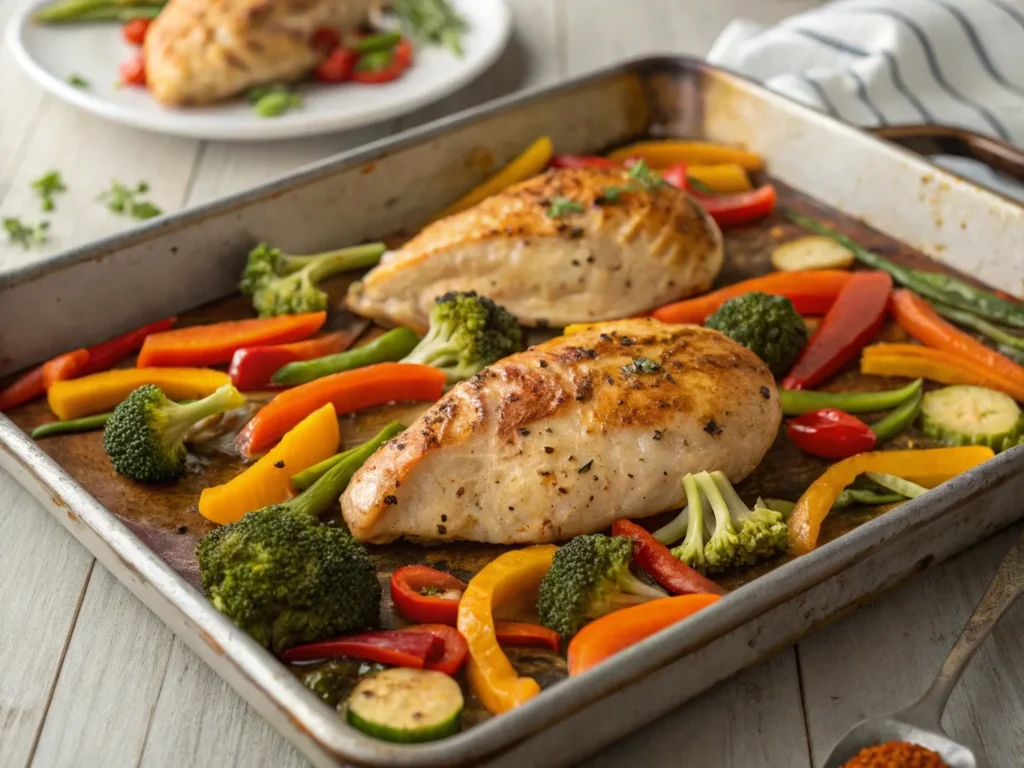
A reliable go-to dish, One-Pan Chicken and Veggies packs protein and vitamins in one meal. However, you can easily tweak the vegetables based on what’s in season.
- Ingredients
- 2 chicken breasts (boneless, skinless)
- 2 cups chopped veggies (e.g., carrots, broccoli, onions)
- 2 tablespoons olive oil
- 1 teaspoon dried oregano
- Salt and pepper
- Instructions
- Preheat oven to 400°F (200°C).
- Season chicken with salt, pepper, and oregano.
- Arrange chicken and veggies on a baking sheet.
- Drizzle with olive oil and bake for 20–25 minutes or until chicken is fully cooked.
- Tips & Variations
- Substitute chicken with turkey breast or firm tofu.
- Add sweet potatoes or butternut squash for a sweet twist.
- Finish with a squeeze of fresh lemon juice.
5.2 Sausage, Peppers, and Potatoes Skillet
Packed with hearty ingredients, this skillet meal combines savory sausage with sweet peppers. In addition, it’s an ideal comfort dish for cooler evenings.
- Ingredients
- 2 sausages (chicken, turkey, or plant-based)
- 2 medium potatoes, diced
- 1 cup sliced bell peppers
- 1 onion, sliced
- 1 tablespoon olive oil
- Salt, pepper, paprika
- Instructions
- Brown sausage in a hot skillet, then set aside.
- In the same skillet, sauté potatoes in olive oil until golden.
- Add onions and bell peppers, cooking until tender.
- Return sausage to the skillet, season, and cook until flavors blend.
- Tips & Variations
- Use turkey sausage for a leaner option.
- Add sliced zucchini or mushrooms for extra veggies.
- Top with shredded cheese if desired.
5.3 Minimizing Cleanup
Fewer pots and pans mean less time cleaning. Therefore, line your baking sheet with foil or parchment paper to make cleanup a breeze.
- Wash and cut vegetables on a single board
- Store used utensils in a designated bowl to rinse together
- Wipe surfaces immediately to prevent stuck-on debris
5.4 Creative Serving Suggestions
On the other hand, presentation can elevate a humble one-pan meal. For instance, arrange colorful veggies around the protein or add fresh herbs before serving.
- Use vibrant plates for a pop of color
- Include a simple side salad for contrast
- Drizzle a homemade sauce or dressing
6. FAQs about Easy Dinner Ideas For Two
Below are common questions about creating Easy Dinner Ideas For Two. Therefore, feel free to adapt these answers to fit your personal style or dietary preferences.
Q1: Can I double these ”Easy Dinner Ideas For Two” for guests?
A: Absolutely. Most recipes scale up easily. However, cooking times might vary when you increase quantities, so monitor doneness carefully.
Q2: How do I store leftovers safely?
A: Let cooked dishes cool, then refrigerate in sealed containers. On the other hand, for meals like soup or casseroles, you can freeze them for up to three months. Always label containers with dates.
Q3: Are there vegetarian substitutes for some of the proteins?
A: Yes. Tofu, tempeh, beans, and lentils work perfectly. Therefore, you can swap them in without changing cooking times too much. Just be sure to season them well.
Q4: What if I have limited cooking equipment?
A: You can still make most of these recipes. For example, if you don’t own an oven, focus on stovetop dishes like the shrimp tacos or risotto. Also, consider one-pot or one-pan meals that only need a skillet.
7. Conclusion
You’ve now explored five major sections filled with Easy Dinner Ideas For Two, each featuring multiple recipes and helpful tips. Therefore, whether you’re aiming for a quick meal, a romantic date night, or a healthy weeknight dinner, you have plenty of choices at your fingertips. In addition, you learned about budget-friendly tips, one-pan wonders, and ways to elevate your dining experience.
We encourage you to try one or more of these Easy Dinner Ideas For Two. On the other hand, feel free to adjust the ingredients based on what you have available. Cooking at home should be fun, flavorful, and stress-free.

